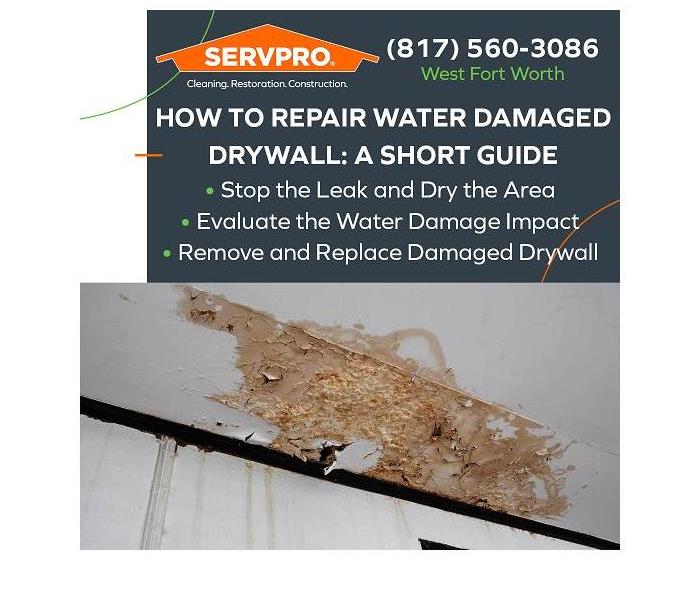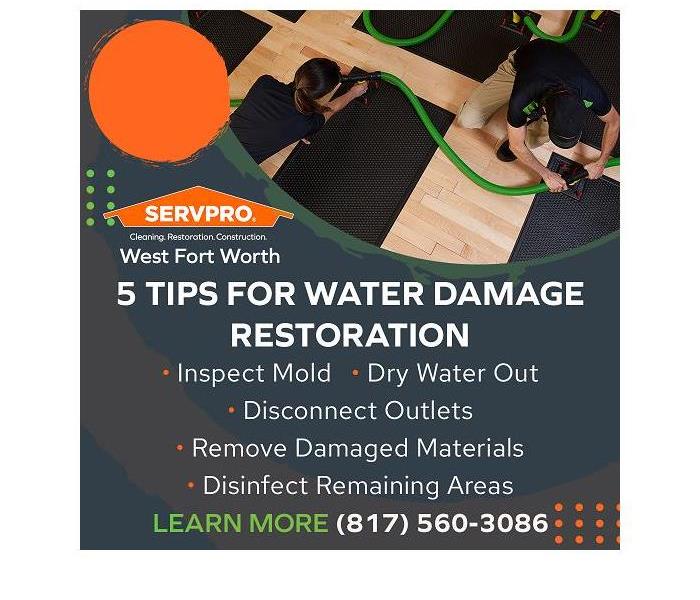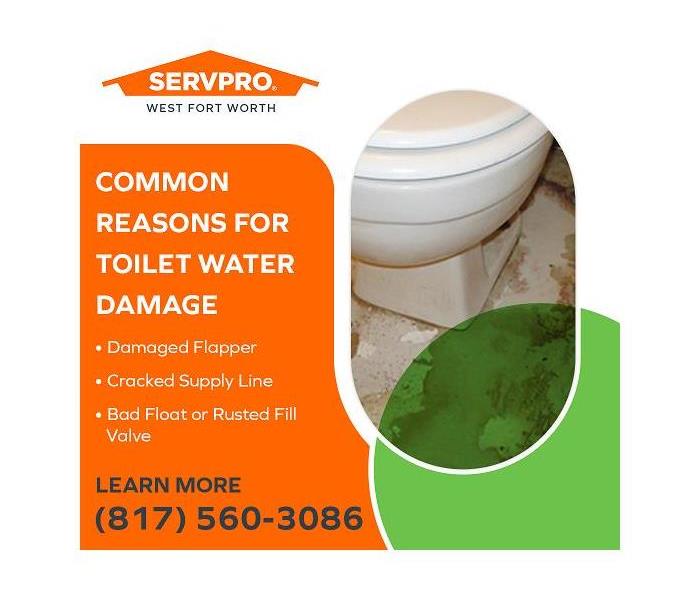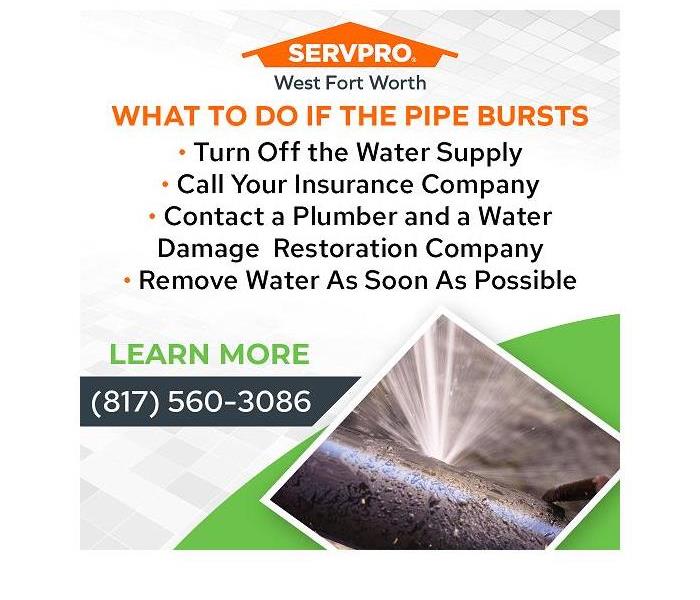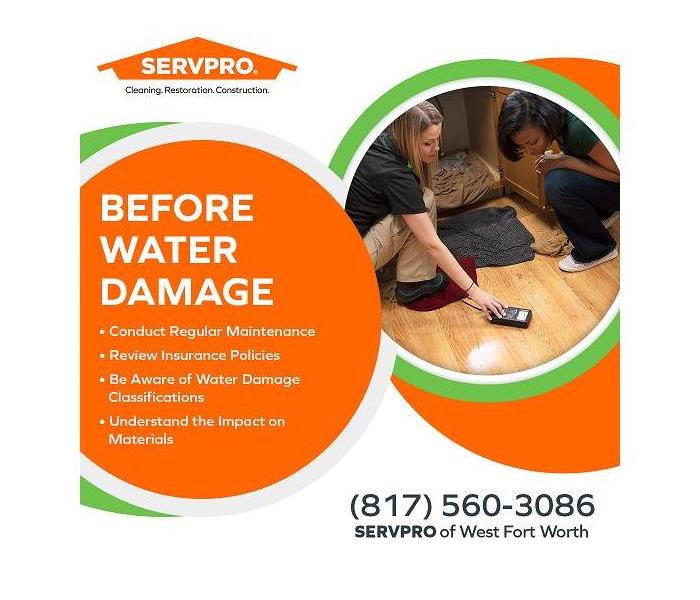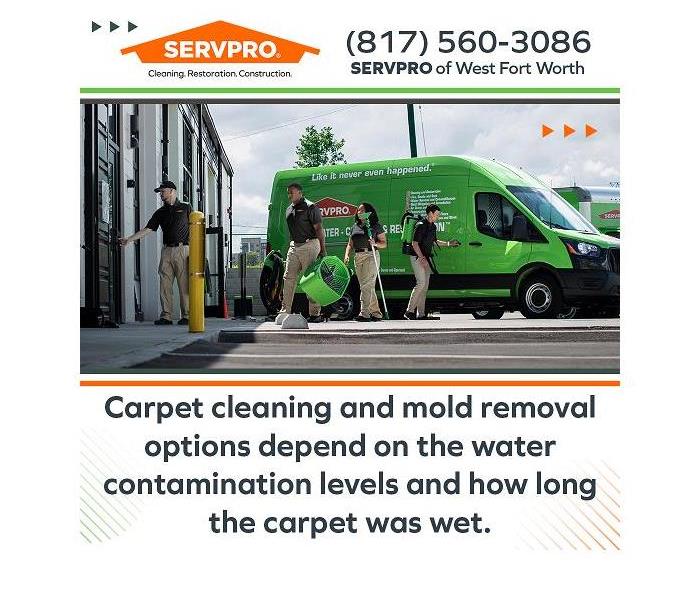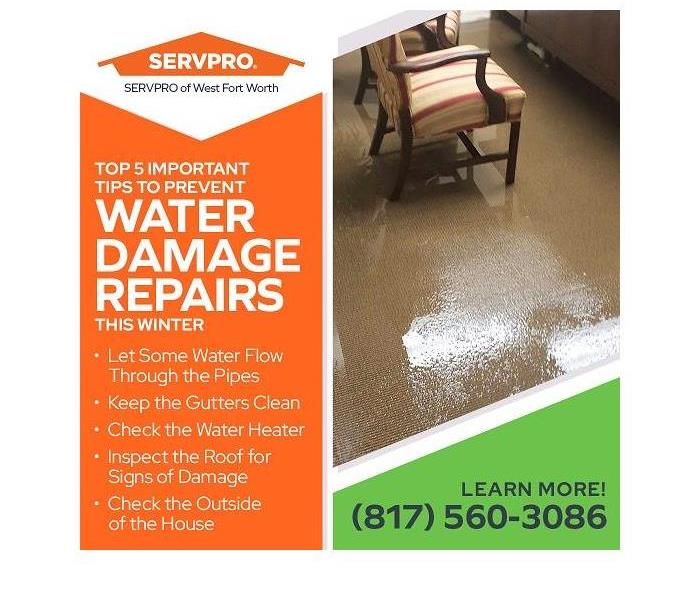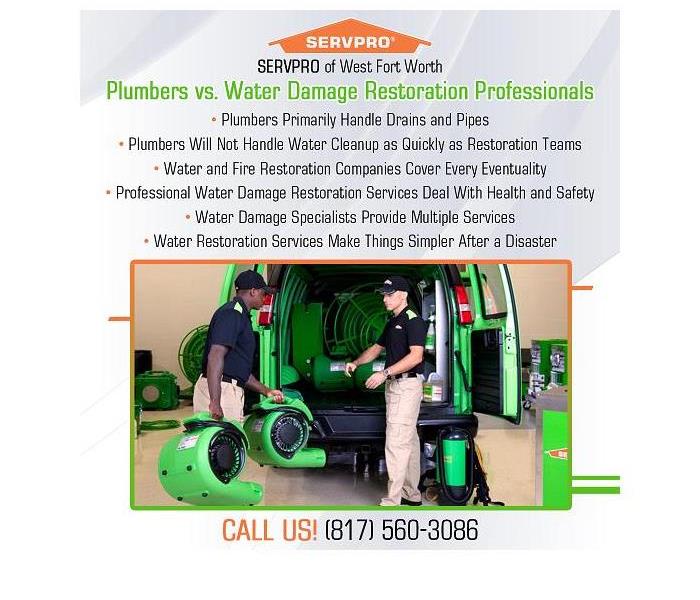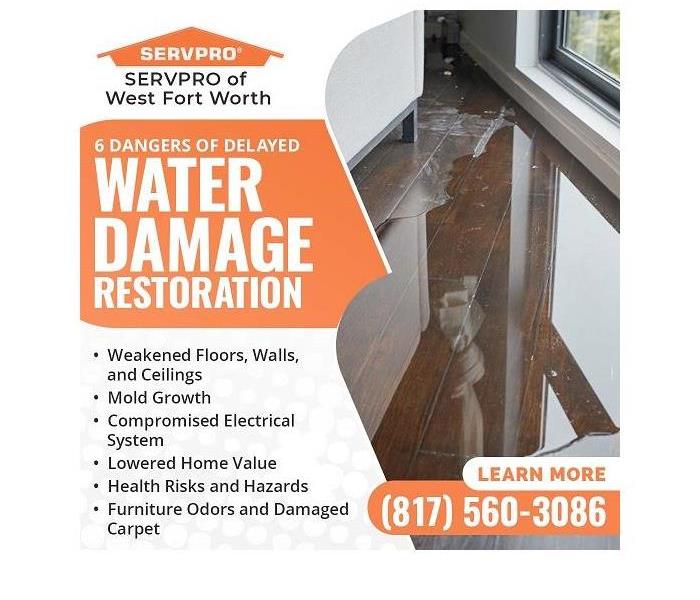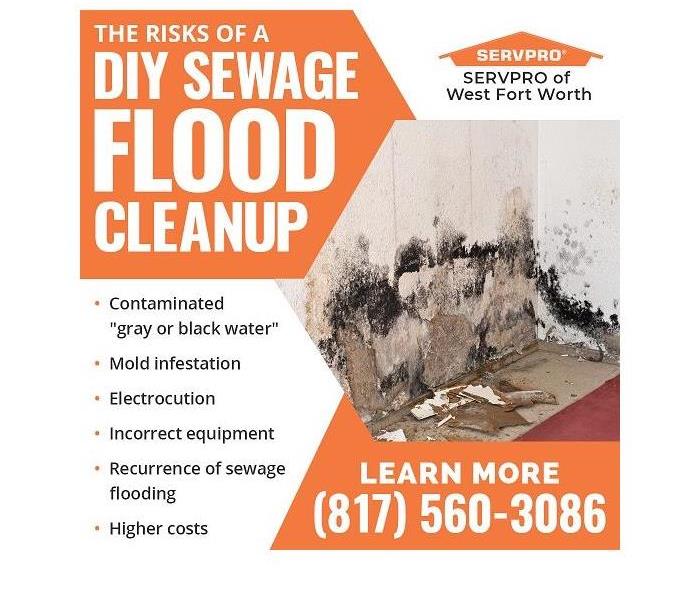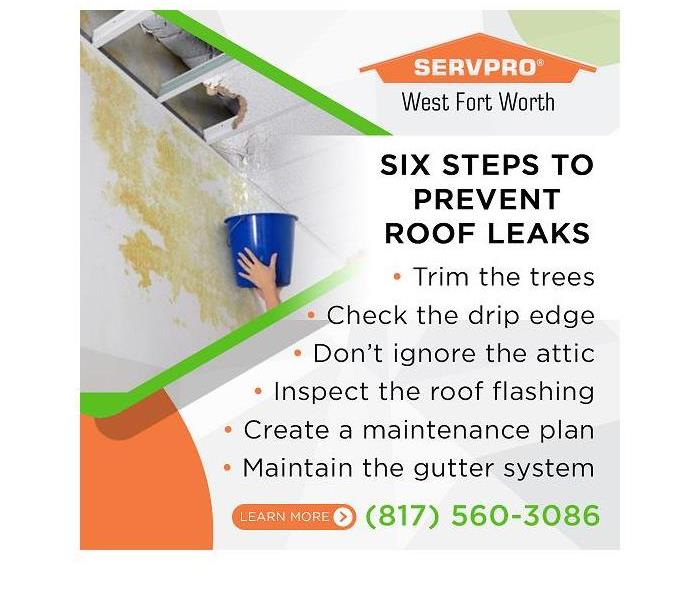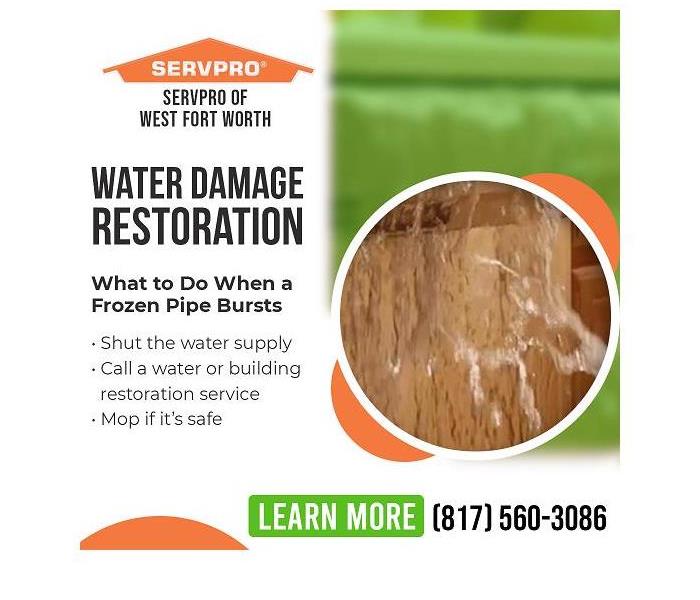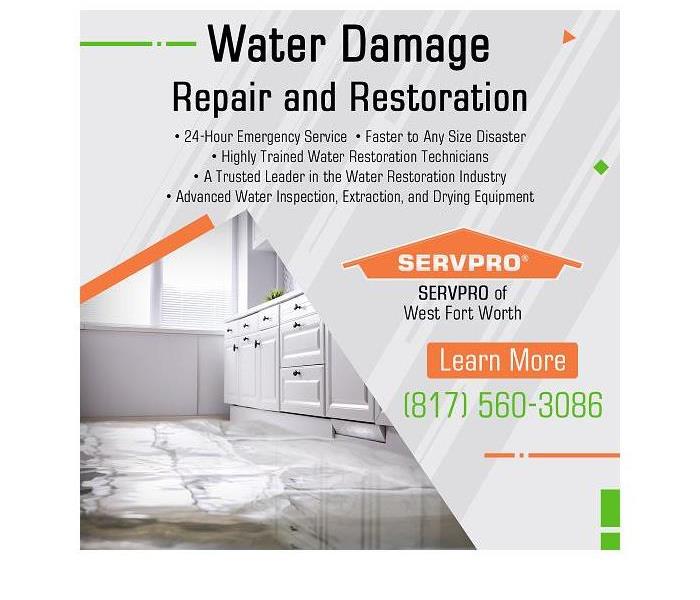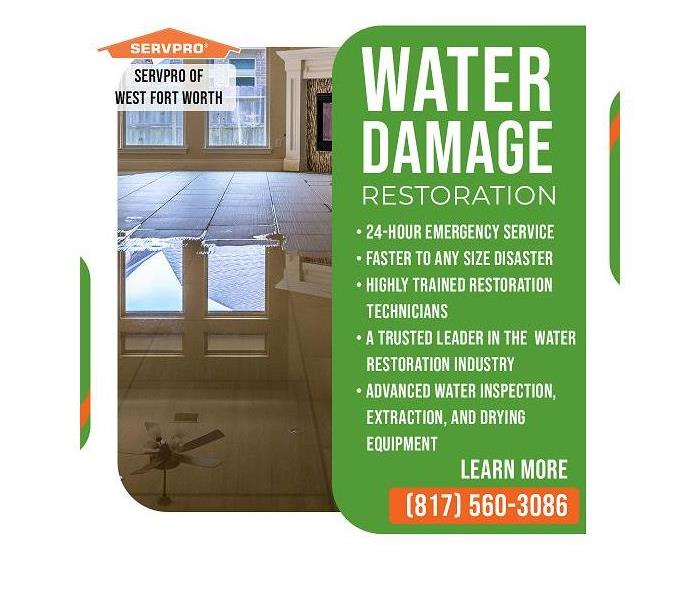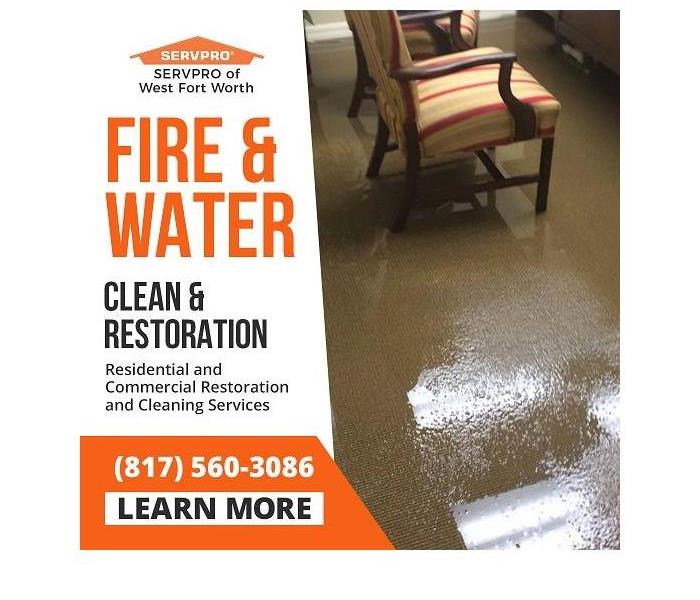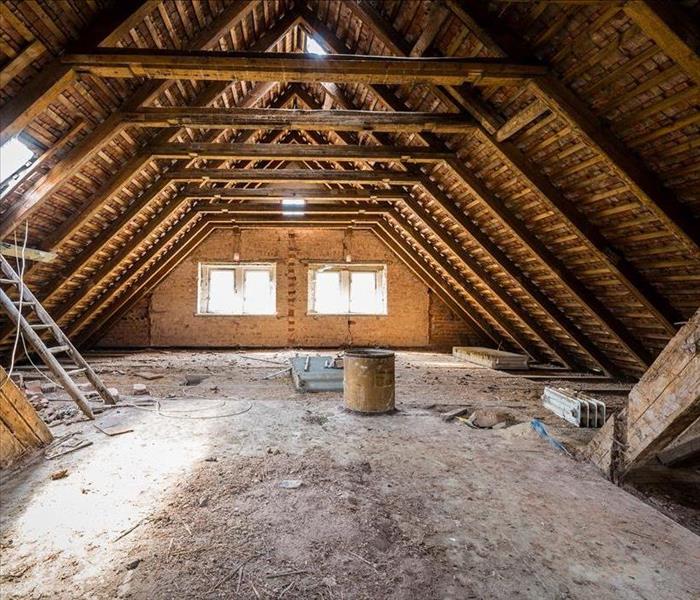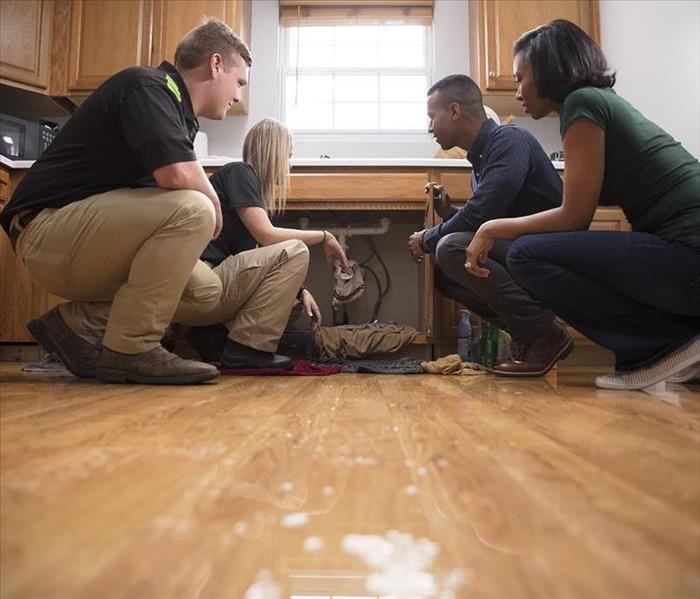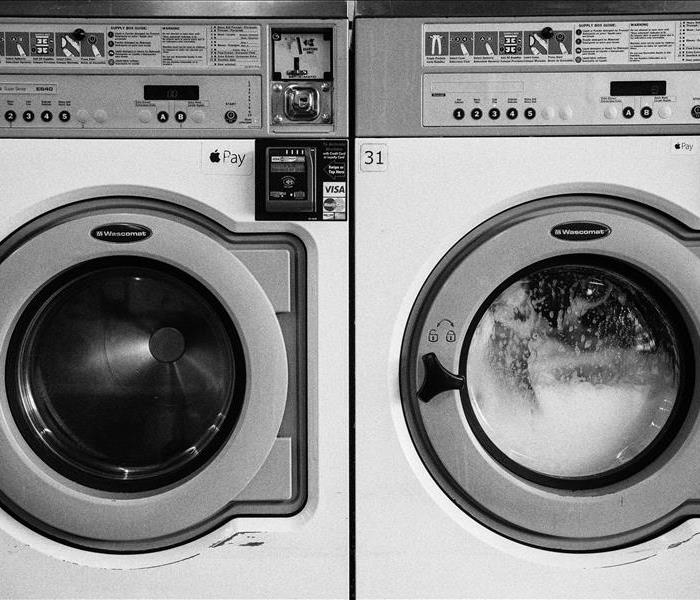Archived Water Damage Blog Posts
Understanding the Water Damage Restoration Process: What to Expect
7/12/2024 (Permalink)
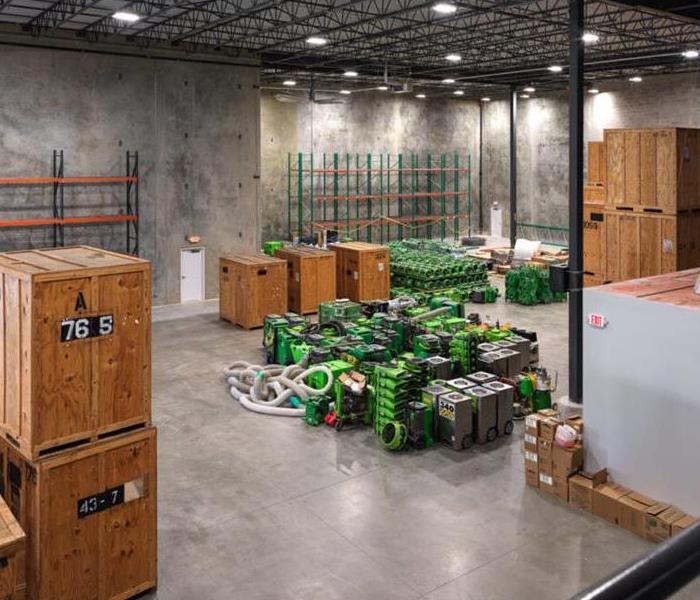 Inside our warehouse
Inside our warehouse
Water damage can be a daunting challenge, but understanding the restoration process can help you navigate it with confidence. Here's a step-by-step guide on what to expect during water damage restoration.
Initial Assessment and Inspection
- Damage Assessment: Professionals will inspect the affected areas to determine the extent of the damage and develop a restoration plan.
- Safety Precautions: Ensuring safety is the first priority. This may involve turning off water and electricity to prevent further hazards.
Water Removal and Extraction
- Water Extraction: High-powered pumps and vacuums are used to remove standing water quickly and efficiently.
- Moisture Detection: Specialized tools, like moisture meters, detect hidden moisture in walls, floors, and ceilings.
Drying and Dehumidification
- Drying Equipment: Industrial-grade fans and dehumidifiers are used to thoroughly dry out affected areas and prevent mold growth.
- Monitoring: Continuous monitoring ensures the drying process is progressing effectively and adjustments are made as needed.
Cleaning and Sanitizing
- Cleaning: Surfaces, furniture, and personal items are cleaned to remove dirt, bacteria, and contaminants.
- Sanitizing: Anti-microbial treatments are applied to prevent mold and bacteria growth.
Restoration and Repairs
- Damage Repair: Damaged materials, such as drywall and flooring, are repaired or replaced.
- Final Inspection: A thorough inspection ensures all damage has been addressed and the property is restored to its pre-damage condition.
Insurance Claims Assistance
- Documentation: Detailed records and photographs of the damage and restoration process are provided for insurance claims.
- Claims Support: Professionals often work directly with insurance companies to facilitate the claims process.
Conclusion
Understanding the water damage restoration process helps alleviate some of the stress associated with it. From initial assessment and water removal to drying, cleaning, and final repairs, each step is crucial in restoring your property. Trusting professionals to handle the process ensures thorough and efficient restoration, getting you back to normal as quickly as possible.
Your guide to water damage restoration in Fort Worth
1/13/2023 (Permalink)
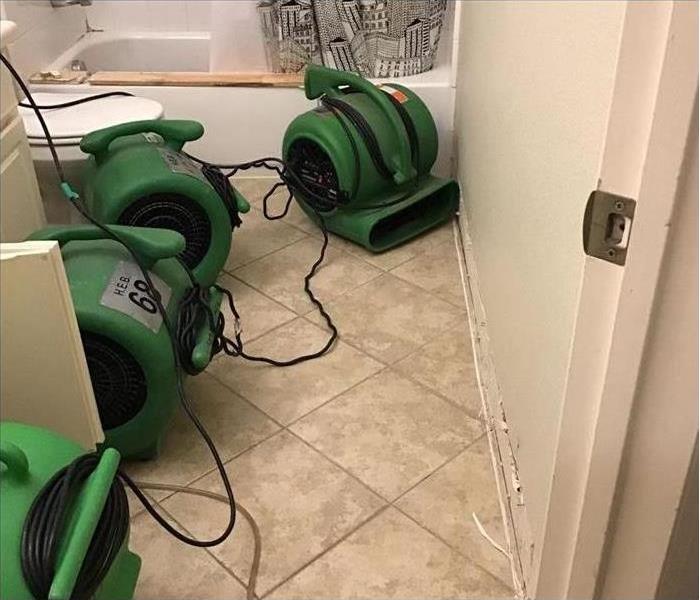 Using equipment to dry water damage in a Fort Worth bathroom.
Using equipment to dry water damage in a Fort Worth bathroom.
If you have experienced water damage in your home, it is important to act quickly. Without proper and timely restoration, the effects of water damage can be devastating. Let’s break down the process of water damage restoration and what you should know about working with a water damage restoration company in Fort Worth.
What is Water Damage Restoration?
Water damage restoration is a process used to repair and restore structures and items that have been damaged by water. This includes everything from furniture and electronics to flooring and walls. The first step in the process is assessing the extent of the damage and determining which services are needed. Depending on the severity of the damage, different processes may be required, including water extraction, dehumidification, sanitization, and reconstruction.
The Benefits of Professional Water Damage Restoration Services
One of the main benefits of hiring a professional service for water damage restoration is that they can quickly identify any safety hazards that may be present due to the presence of standing water or moisture in your home. Additionally, they will have access to specialized equipment that can help speed up the drying process and limit further damage from occurring. Professional services also come with experience and expertise dealing with insurance companies and their claims processes. This can help you save money and maximize your dollars.
Selecting a Restoration Company
When selecting a company for water damage restoration services in Fort Worth, it’s important to do your research ahead of time so you know exactly what services they provide and what their quality of work is like. You should also check customer reviews online to get an overall idea of how reliable they are. It also never hurts to ask family members or friends if they have had any experience with local companies. This way, you can get first-hand advice before making a final decision on a home restoration company in Fort Worth.
Steps Involved in Water Damage Restoration
Step 1 – Stop the Flow of Water
The first step in any water damage restoration job is stopping the flow of water. Depending on where the water is coming from, this could mean turning off the main water line or shutting off power to avoid electrical hazards. Once this has been accomplished, you can begin assessing the damage and developing a plan for repair.
Step 2 – Remove Excess Water
Once you have stopped the flow of water and assessed how much damage has been done, it’s time for cleanup. This means removing all excess standing water as quickly as possible with wet vacuums and other specialized tools. Since mold and mildew can start to grow within 48 hours if not properly addressed, it is essential that this step be completed promptly.
Step 3 – Dry Out Affected Areas
After all standing water has been removed from your property, it’s to thoroughly dry out any affected areas. This will help prevent any further growth of mold or mildew and ensure that all affected surfaces are safe for use once again. You may also need to invest in dehumidifiers or air movers during this step to completely dry out carpets and walls so they are not permanently damaged by moisture buildup. This can get pretty expensive, which is why it’s nice to work with a professional restoration company in Fort Worth. They’ll already have access to this specialized equipment.
Step 4 – Reconstruct
After the area is dried out, it’s time to reconstruct any damage. Damage may occur for a variety of reasons. For example, if water damage happens behind a wall, a section of the wall may need to be removed in order to shut off the water and repair the leak. As another example, baseboards and sections of flooring may also need to be removed in order to dry out impacted areas. If you work with a professional restoration company, they can help you reconstruct any damage and also help you navigate the claims process with your insurance company.
When facing water damage in your home or business in Fort Worth, it is essential to act quickly and hire a qualified contractor to facilitate the restoration process. With help from an experienced professional, you can rest assured knowing that your property will be restored correctly.
A guide to water damage restoration repair
12/28/2022 (Permalink)
Blog Summary: Team Shaw of SERVPRO® of West Fort Worth provides a short guide to repairing water-damaged drywall and how to prepare for professional water damage restoration.
How to repair water damaged drywall: A short guide
When a water leak or flood causes warped, bubbling drywall, homeowners need fast and reliable professional water damage restoration services. Learn more about restoring drywall with Team Shaw of SERVPRO of West Fort Worth.
The water damage restoration process involves a few steps to ensure customer satisfaction. Learn more about these steps and how the restoration experts work to restore the home to safe conditions.
Stop the leak and dry the area
The first step is to dry the area of any moisture. Sometimes, this will involve shutting water sources off to broken pipes or waiting for flood water to dissipate. Homeowners should allow experts to perform any necessary plumbing repairs to prevent future water damage from remaining leaks.
Drywall is porous and absorbent, meaning it will continue to soak up water or other moisture in the area. A professional water damage repair team will use specialized equipment to remove moisture from the drywall and surrounding items, including fans and dehumidifiers.
Evaluate the water damage impact
In some situations, water damage may only be superficial or in a small area, allowing for a faster and easier repair. In other cases, the water may thoroughly soak critical components in the building and reduce structural integrity.
The team will evaluate the area thoroughly to provide the best service possible, detecting mold or other damage that could be hiding behind drywall.
Water damage can encourage mold growth in and around the house's drywall. Only trained experts can handle these situations safely with advanced knowledge and techniques. The expert water damage restoration team will create a plan to eliminate the mold before moving to the next phase of restoration.
Remove and replace damaged drywall
After creating a tailored solution to address damaged drywall and eliminate mold growth lurking behind it, the team will begin the in-depth restoration process. Depending on the extent of the damage, the experts may be able to perform surface repairs or may have to go deeper into the wall to ensure complete restoration.
This step includes cleaning the area of any debris and dirt and remediating mold if present. The experts at SERVPRO West Fort Worth will remove the soaked, damaged drywall from the site and install a new one. If any other furniture or belongings sustain damage, the team will restore these if possible, but buying new furniture is the most cost-effective option.
SERVPRO offers valuable water damage restoration services to restore drywall and help homeowners reclaim their homes.
Expert water damage restoration in West Fort Worth, TX
SERVPRO of West Fort Worth provides a wide array of professional restoration services to repair homes and businesses after a fire, flooding, mold infestation, and more. The team makes the slogan, “Like It Never Even Happened,” a reality for homeowners throughout the Fort Worth area. SERVPRO restores and installs drywall, hardwood, and tile and repaints damaged rooms.
SERVPRO offers help with filing claims to insurance for water damage to cover the costs of restoration and repair.
Do you live near West Fort Worth or Eagle Mountain, TX? Is your property experiencing water damage and needing repair as soon as possible? Contact Team Shaw of SERVPRO of West Fort Worth for expert water damage restoration at (817) 560-3086 today.
Why choose SERVPRO of West Fort Worth for water damage restoration in Azle, TX?
11/23/2022 (Permalink)
Blog Summary: If you have ever experienced water damage in your home or office, you know that restoring the affected area can be a daunting and expensive task. The professionals at SERVPRO® of West Fort Worth are experts in water damage restoration. They can help Azle, TX, home and business owners to get their properties back to their preloss conditions quickly and affordably.
Water damage restoration is the process of cleaning up the water-damaged property. Water damage can be caused by many different sources, such as storms, floods, leaks, and sewage backups. Water entering a building can cause extensive damage to the structure and its contents. The water may also lead to mold growth and mildew, which can cause serious health problems for the occupants.
SERVPRO of West Fort Worth is a water damage restoration company that has been helping families and businesses in Azle, TX, recover from water damage for several years. Their highly trained staff uses the latest technology and equipment to clean and restore water-damaged properties. They also follow IICRC standards and best practices to provide their customers with the best possible service. If you experience water damage, don't hesitate to call SERVPRO of West Fort Worth. They will work quickly and efficiently to restore the property to its pre-damage condition.
5 Tips for water damage restoration
Water damage is one of the most common problems faced by homeowners. Whether it's caused by a leaky roof, a broken pipe, or a severe storm, water can quickly cause extensive damage to the home. When dealing with water damage, you must first take steps to prevent further damage. Here are five tips for water damage restoration:
- Disconnect electric outlets. After discovering water damage in homes, the first thing to do is to unplug all electronics immediately. It is best to have this done by a professional to prevent electric shock, injuries, and damage to appliances.
- Inspect for mold. Mold can quickly grow in damp and humid areas. If you see signs of mold, removing and preventing its spread is essential. For health and safety concerns, it is best to have professional mold removal services do the job. These mold removal experts use proper protective equipment and cleaning chemicals for mold and other microbial contamination on the property.
- Dry the water out. Once any mold is removed, the drying process for the affected area must start. Drying can be done with fans, dehumidifiers, or even opening windows and doors to allow air circulation, which helps in the drying process.
- Remove damaged materials. Once the area is dry, materials like carpets, carpet padding, drywall, and insulation damaged by the water must be removed. Check if the materials can be saved and used again or need to be replaced.
- Disinfect. Finally, once all the water-damaged materials are removed, the area must be disinfected to prevent mold and bacteria growth.
Why Choose SERVPRO of West Fort Worth for the water restoration and damage process?
When homes or businesses suffer water damage, it can be a stressful and overwhelming experience. Property owners need a company they can trust to handle the restoration process quickly and efficiently. SERVPRO of West Fort Worth has several years of experience in water damage restoration. Their team of water damage professionals works with the property owners every step of the way, from the initial emergency contact to the final restoration of the property.
Contact SERVPRO of West Fort Worth for hiring water damage restoration professionals
If homes or businesses in Azle, TX, have experienced water damage, the property owners can contact SERVPRO of West Fort Worth. Their team of experts is available 24/7 to help and get the properties back to their preloss conditions quickly and efficiently. They understand that dealing with water damage can be a stressful experience, so they are dedicated to making the process smooth and stress-free for families and business owners. For more information or to schedule a free consultation, they can be reached at (817) 560-3086.
Why Is Water Leaking at the Base of My Toilet: Common Reasons and Prevention
9/14/2022 (Permalink)
Blog Summary: Water pooling around a toilet's base indicates a developing issue. SERVPRO® of West Fort Worth, experts in water damage restoration, educates homeowners on what can lead to water damage. Read on to learn when to call SERVPRO's qualified technicians to fix leaks and prevent future issues.
Toilets are one of the most used appliances in the house. When toilets leak, they can cause hidden water damage that requires a water damage specialist.
Constant water leakage increases water bills because the toilet's internal pump keeps running. Water from the toilet can also seep into the walls and floors, creating ideal spaces for mold and mildew to grow.
Homeowners in Azle, TX, can rely on SERVPRO of West Fort Worth to diagnose and repair water-related issues. The water damage experts are available 24/7 and know how to fix toilet water damage.
Common reasons for toilet water damage
Many toilets leak due to damaged parts. The most common reasons homeowners call SERVPRO for toilet repair include damaged flappers, supply lines, floats, and fill valves.
Damaged flapper
The flapper keeps water in the toilet tank and releases the water upon flushing. Damaged flappers cannot maintain the seal between the tank and the toilet bowl, causing water to leak. These leaks lead to water constantly refilling in the tank, which raises water bills.
Cracked supply line
The toilet tank fills with water from a cold-water supply line in a closed system that keeps air out and water inside. However, high water pressure or wear and tear crack the supply line and cause hidden leaks.
Bad float or rusted fill valve
A float in the toilet tank monitors the water level by floating on top, allowing the tank to refill to a specific height. A faulty float doesn't indicate when the water should stop, causing the toilet tank to overflow.
Even if the float is working, a rusted fill valve could cause an overflow. This valve controls how much water enters the tank. A damaged fill valve may allow water in even though the float has reached the correct height.
What to look out for
Check for consistent trickling sounds or streams of water after flushing. Also, keep tabs on flushing noises when no one has used the toilet. The flushing sound without the water leaving the bowl means water is refilling the tank.
In the case of obvious damage, like a broken toilet bowl or tank, immediately shut off the water to prevent water damage. Reach behind the toilet to the valve on the wall and turn it on until the water stops running. Flush the toilet once more to remove all water.
Leaks can affect the surrounding walls and floors. If water pools near the toilet, call a water damage specialist for water removal and mold remediation. Water damage restoration specialists will ensure that your repaired supply line stays up to Azle's city code.
Toilet Water Damage Repair From SERVPRO of West Fort Worth
An experienced residential and commercial restoration team repairs the results of toilet water spills effectively and at reasonable prices. SERVPRO of West Fort Worth has certified and specially trained technicians who know the best ways to prevent water damage.
Contact Team Shaw of SERVPRO of West Fort Worth at (817) 560-3086 for five-star service when you need water damage restoration in Azle, TX.
Water Damage Restoration: Emergency Actions You Should Take When a Frozen Pipe Bursts
8/11/2022 (Permalink)
Blog Summary: SERVPRO of West Fort Worth, experts in water damage restoration, describe the symptoms of a frozen pipe and advise homeowners on what steps to take if a frozen pipe bursts.
When a frozen pipe bursts, it may cost hundreds in damages. However, there are warning signs of a frozen pipe and ways to prevent a burst before it happens.
Here's some info on handling a frozen or burst pipe. The best option is to call a specialist in water damage restoration, such as SERVPRO of West Fort Worth.
Identifying Frozen Pipes
One of the most effective preventative measures is figuring out which pipes may have frozen over and are at risk of bursting. Whenever cold weather settles in the area, be sure to turn up the thermostat and call a professional plumber. Look out for these signs that indicate a frozen pipe:
- A complete lack of flowing water or strange noises from the pipes when turning the water knobs
- Visible frost on the outside of pipes that may indicate internal freezing
- An unpleasant smell emanating from a pipe, which may have frozen with waste inside it
Cities with mild or warmer temperatures are at higher risk of burst frozen pipes because freezing cold is atypical. Infrastructure in Fort Worth, TX, may not fare well in colder weather, so remember to call a plumber for post-freeze checks. Additionally, contact a restoration specialist if a burst pipe causes inner wall or floor damage.
What to Do if the Pipe Bursts
Turn Off the Water Supply
Before freezing weather arrives, figure out where the main water valve is in order to shut it off during emergencies. Be careful to shut off electricity in areas with water damage if possible. This will help keep you safe from electric shock.
Call Your Insurance Company
Call your insurance company as soon as possible. Insurance policies usually cover frozen pipe burst damages. The insurance company can help pay for costly repairs and lost valuables.
Contact a Plumber and a Water Damage Restoration Company
Plumbing and water damage restoration are two different skill sets, and many companies do not offer both. Plumbers are necessary for replacing the pipes, and the water damage restoration company helps clean up the aftermath. The best companies provide 24-hour emergency services to assist whenever a frozen pipe bursts.
Costs may vary depending on the severity of the damage. Contact SERVPRO of West Fort Worth for top-notch water damage restorations at (817) 560-3086.
Remove Water As Soon As Possible
Standing water can damage the walls and floors of the building, seep into the floorboards and carpets, and lead to mold and mildew development. To prevent this while waiting for the plumber, immediately use towels, buckets, wet vacuums, and mops to remove as much water as possible. The longer the water sits, the more likely it is to cause further damage.
Water Damage Restoration From SERVPRO of West Fort Worth
An experienced water damage restoration team can clean up pooling and seeping water quickly and at reasonable prices. SERVPRO of West Fort Worth has certified and specially trained technicians who know the best ways to remove and fix damaged materials and items. Their drying equipment and knowledge are second to none.
Contact Team Shaw of SERVPRO of West Fort Worth at (817) 560-3086 today for your water damage emergencies.
8 Important Facts About Water Damage Restoration
6/16/2022 (Permalink)
Blog Summary: Read these eight facts about water damage to prepare for emergencies. The more that home and business owners know about water damage restoration, the more they can do to prevent or minimize that damage and the need for repair.
Several things cause water damage. Understanding water damage before it occurs minimizes damage and makes handling easier. There are eight factors to consider regarding water damage and restoration.
Contact Team Shaw of SERVPRO of West Fort Worth for more on residential and commercial water damage restoration.
Before Water Damage
It is just as important to understand how to prevent water damage as it is to resolve it.
Conduct Regular Maintenance
Conduct maintenance at least twice a year by inspecting leaky or broken pipes, cracks in window or door seals, and leaky roofs.
Review Insurance Policies
Most home insurance policies do not cover flooding. Homeowners are encouraged to purchase separate flood insurance. Review policies for water damage coverage before significant water damage occurs.
Be Aware of Water Damage Classifications
White water comes from clean sources, including drinking water. Gray water damage comes from showers, baths, and washing machines. Black water damage comes from contaminated sources such as toilets, septic tanks, and floodwaters. More contaminated water damage requires more extensive cleaning.
Understand the Impact on Materials
Water damage varies with different materials. Some water-damaged articles and furnishings are unsalvageable and require discarding, regardless of restoration practices. Fabrics and carpet padding are primary examples because they foster mold and mildew growth.
After Water Damage
When water damage occurs, remain calm, take a breath, and consider the next few steps.
Act Quickly
Water damage worsens the longer it sits. Standing water increases mold and bacteria growth which can be challenging to eliminate. Quick actions make a difference between salvaging the items or throwing them out.
Stop Water at the Source and Contact Insurance Companies
Before starting the restoration, stop the damaging water at the source. Find the leak, cover the hole in the roof, or turn off the water to the home. Take detailed photos and report the incident for insurance purposes.
Determine Water Extraction Methods
Proper extraction depends on the extent and type of water damage. Damage from a leaky pipe may only require basic drying and cleaning, but flooding from a natural disaster requires more extensive extraction and deep cleaning to rid contamination.
Conduct Thorough Restoration Measures
Most assume that water damage restoration is lengthy and complex. While it can take a few days, the amount of disruption to the daily routine is relatively minimal when done correctly. The most critical concern is to be thorough.
Allow one to two full days of drying time. Rushing the process increases the likelihood of water remaining, causing further damage. Once dry, begin mildew and mold removal from drywall, furnishings, floors, and ceilings.
Professional Water Damage Restoration
SERVPRO of West Fort Worth is a family-owned and -operated damage restoration company serving the West Fort Worth areas, including Benbrook, TX. The company offers free consultations and 24-hour emergency services. SERVPRO trains its technicians for any disaster using the most advanced equipment in the industry.
Following severe damage, homeowners and businesses seek professional damage restoration from various companies, including water restoration companies, mold remediation companies, and fire restoration companies. The mission of SERVPRO of West Fort Worth is to be the resource for everything you need in one place. Services include:
- Fire and emergency water restoration
- Residential water cleanup
- Mold removal
- Commercial cleaning services
Contact Team Shaw of SERVPRO of West Fort Worth at (817) 560-3086 to schedule an appointment for water damage restoration.
Can Vinyl Planks Be Reinstalled After Water Damage?
4/29/2022 (Permalink)
Blog Summary: As one of the best water and fire restoration companies serving Fort Worth and nearby communities, SERVPRO of West Fort Worth shares what can happen when vinyl planks get wet. The certified water damage restoration experts outline warning signs of water damage, treatment options, and mold prevention methods.
Can Water Damage Vinyl Planks?
Vinyl planks are a popular flooring material due to their water resistance. While a spill likely would not have a lasting effect on vinyl, prolonged exposure to water can cause considerable problems for property owners, including mold.
Water damage restoration after a flood is essential for preserving the integrity of vinyl plank flooring. However, the ability to reuse the material will depend on several factors.
How Water Damage Occurs in Vinyl Flooring
Though vinyl contains water-resistant properties on its surface, it is not impervious to moisture damage. However, a severe flood or prolonged exposure to moisture can cause water to seep under the planks through the joints that connect them or gaps between the wall and the floor. It is harder for water to penetrate a floating vinyl floor, but it isn’t impossible.
Water can also come from the subfloor or substrate. For example, moisture build-up in concrete can expose the planks to water from under their surface. A wood subfloor can retain moisture from a plumbing leak, flood, or crawl space humidity, which requires water damage restoration services.
Signs of Water Damage Under Vinyl Flooring
Discoloration
Because vinyl has water resistance, it is not easy to stain. Most fluids are simple to clean off the floor using a mop or clean rag. However, if the material develops discoloration or a tarnished appearance in one or more spots, the culprit could be moisture build-up under the planks.
Bubbles in the Planks
Sometimes, water damage in the substrate can cause vinyl planks to form bubbles or ripples along their surface. In severe cases, the damage is visible, but people are more likely to feel the bumps than see them.
Mold
Water damage often leads to mold, which only takes a day or two to grow into an unhealthy level.
Mold thrives in damp places, so if noticeable formations develop on vinyl flooring, the material is likely compromised. In that case, water damage restoration and mold removal from leading mold remediation companies are a must because the growths can:
- Spread to other furniture, walls, personal belongings, and other surfaces
- Cause structural damage to the home or business
- Trigger health symptoms related to allergens.
Vinyl Planks and Water Damage Restoration
Working with emergency water restoration companies is essential for addressing moisture-damaged vinyl planks. These professionals have professional-grade equipment to dry out moisture, like dehumidifiers and vacuums. Restoration experts can reinstall undamaged vinyl planks after removing water from them and the subfloor.
Emergency Water Restoration Services from SERVPRO of West Fort Worth
SERVPRO of West Fort Worth is one of the best water restoration and mold remediation companies in the area, serving Azle, TX, and the greater Fort Worth area. The team of certified restoration professionals is available 24/7 to handle flooding, mold, and storm damage that could devastate a home or business.
As an industry leader, the residential and commercial cleaning service uses advanced restoration equipment and techniques for water cleanup. Contact Team Shaw of SERVPRO of West Fort Worth today at (817) 560-3086 to request water damage restoration services.
Water Damage Restoration Company Explains the Importance of Carpet Water Removal
3/22/2022 (Permalink)
Blog Summary: The water damage restoration team of SERVPRO of West Fort Worth explains why homeowners should rely on professional water removal to restore carpets after a flood.
Carpet Water Damage: What It Means and When to Call for Professional Water Removal
It's no secret that moisture and carpeting are a bad combination. Property owners affected by a flood or water leak that made its way to the carpet in their home are in a race against time. Water removal is the only way to save a carpet and make the home liveable again after water damage.
A wet carpet can quickly compromise the safety and comfort of the home if it's not cared for immediately. But replacing an expensive and valuable carpet isn't a property owner's only option. Hiring an emergency water restoration company like SERVPRO of West Fort Worth can save a lot of time and money.
What Happens to Carpets After Water Damage?
When a carpet and carpet pad get soaked and stay wet, they become the perfect breeding ground for mold. Mold is a fungus that multiplies rapidly and emits a foul odor that is difficult to eliminate. It also produces toxins that can cause adverse health effects.
If a homeowner suspects mold growth, discarding the wet carpet right away is the best course of action. Consulting with mold remediation companies to remedy the affected areas can ensure the home's safety.
Water damage can also cause carpet delamination when excessive moisture weakens the glue that holds carpet layers together. When this happens, water removal services won't save a carpet and replacing it will be the only option.
Carpet cleaning and mold removal options depend on the water contamination levels and how long the carpet was wet. If the carpet becomes saturated with unsanitary water, floodwater can infect the carpet with bacteria.
Carpets saturated with unsanitary water require immediate water damage restoration. Since black water is highly unsanitary, it's impossible to successfully clean and dry a carpet damaged from black water sources.
Is It Possible to Repair a Water Damaged Carpet Without Professional Help?
Some people might try to fix their water-damaged carpet by using water removal techniques they learned online. It's best to let the experts handle such a task.
Homeowners risk damaging their carpet when they take the DIY approach to cut corners. Failing to remove all the traces of moisture will result in significant mold, mildew, and bacteria growth.
According to the Environmental Protection Agency, the carpet and padding need to be completely dry within 48 hours to prevent mold growth and further deterioration. It takes time and professional-grade humidifiers and equipment to dry a carpet thoroughly.
Reliable Water Damage Restoration Services in Fort Worth
SERVPRO of West Fort Worth is one of the best water restoration companies in Fort Worth, TX. With years of professional experience providing residential and commercial water damage cleanup, SERVPRO guarantees high-quality water removal services for Texas clients.
Carpet water extraction is just one aspect of the restoration service SERVPRO offers. As the top-rated specialty and commercial cleaning service, they thoroughly clean water-damaged carpets and restore them to like-new condition.
SERVPRO of West For Worth is an all-in-one company that provides the same services offered by fire restoration companies and mold remediation companies. Contact Team Shaw of SERVPRO of West Fort Worth at 817-560-3086 for water removal and restoration services.
Things to do for Water Damage until Help Arrives in Fort Worth
2/23/2022 (Permalink)
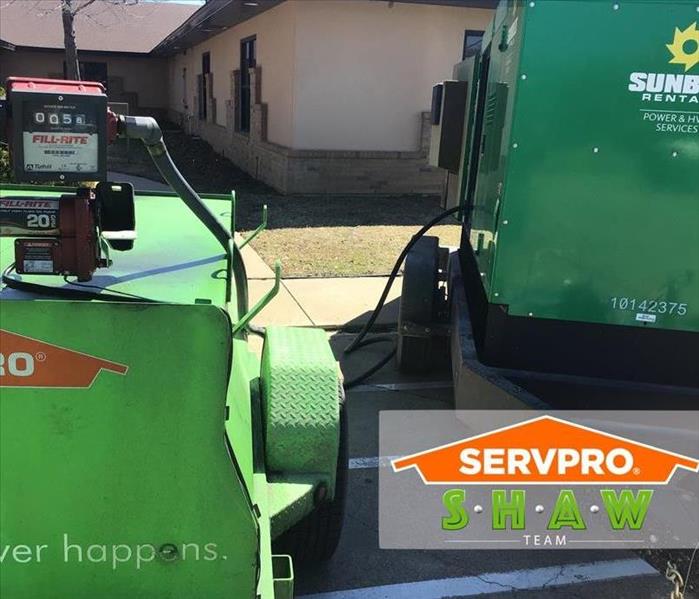 Are you swimming unhappily in water from a flood? Call us for help!
Are you swimming unhappily in water from a flood? Call us for help!
Walking into a flooded home or business is never a good way to start the day in Fort Worth! If you find yourself dealing with wet, soggy furniture, carpeting, etc., give SERVPRO of West Fort Worth a call at 817-560-3086 and we will begin the restoration process.
While you are waiting for SERVPRO to arrive, there are a few things you can do, if you choose, but first make sure the building or home is safe to enter.
SERVPRO of West Fort Worth Wants You to Remember:
- Wet surfaces are slippery
- Make sure electrical power is off before you handle devices
- Make sure you are standing on a dry area before you turn on the electric power
- Waterlogged materials are heavy
SERVPRO of West Fort Worth suggests you:
- Remove excess water with mops and/or towels
- Wipe water from wood furniture or other items
- Place foil or blocks between furniture and wet carpeting
- Turn on dehumidifiers or air-conditioning if it is safe
- Move colored items from wet carpeting
- Move loose items from the floor or counters
- Remember that mold starts growing within 24 hours
- Stay away from rooms that have sagging ceilings
- Remove wet cushions. Prop them upright to dry
- Move artwork to a safe, dry place
- Start drying items ASAP
More helpful tips: https://www.fema.gov/fact-sheet/returning-home-after-flood
These tips from SERVPRO of West Fort Worth help you winterize your home.
1/27/2022 (Permalink)
Blog Summary: Burst pipes, ice dams, storms, and other hazards increase the chance of flood damage and water damage during the winter. The flood damage restoration specialists at SERVPRO of West Fort Worth share their tips on preparing for the winter.
Top 5 Important Tips to Prevent Water Damage Repairs this Winter
The average home has many points of vulnerability that could lead to water damage over the winter. Clogged gutters, faulty pipes, leaky roofs, and inadequate storm preparation cost homeowners across the country thousands of dollars each winter. The technicians at SERVPRO of West Fort Worth share tips for home winterization.
For homeowners worried about expensive water damage repair after the next winter storm or companies worried about commercial water damage, these four tips from SERVPRO of West Fort Worth could save property owners on costly water damage restoration bills in winter. SERVPRO stands out among water restoration companies and fire restoration companies for its years of quality service and commitment to customers.
Tip 1: Let Some Water Flow Through the Pipes
If water is allowed to sit in pipes when the temperature drops below freezing, it can expand within the pipes causing them to burst. Letting a trickle of water flow through the faucet draws water through the pipes and prevents it from settling long enough to freeze.
Tip 2: Keep the Gutters Clean
Freezing rain and snow can cause ice buildup on the roof and gutters. Ice buildup can create an ice dam that allows meltwater and rainwater to collect, causing damage to the roof and the gutters. Keeping the gutters and roof free of twigs, leaves, and other pieces of debris allows water a clear path to the ground.
Tip 3: Check the Water Heater
A good water heater is indispensable in the cold winter months. A malfunctioning heater can leak, causing substantial damage to the floor, nearby walls, and appliances. Leaky valves and damage to the water tank itself are the most likely culprit when a leak arises. Have a professional heating repair technician inspect the heater for signs of valve malfunction or corrosion.
Tip 4: Inspect the Roof for Signs of Damage
Roof leaks are another cause of winter damage. Autumn storms may damage the roof shingles, but the damage might go unnoticed until snowfall or freezing rain adds additional stress on the roof. If the roof is weakened and cannot handle the weight of the snow, it could leak, causing damage to your attic and the ceilings of the rooms below. If leaks occur, call the water damage repair experts at SERVPRO.
Tip 5: Check the Outside of the House
Clear any tree branches and other clutter from around your home. Look for any signs of cracks or rot on the house’s exterior. Clutter around the house can cause water to pool, and when temperatures drop below freezing, the ice expands, widening cracks and creating opportunities for new leaks. Walk around the house and inspect the house for damage at ground level.
For more information about preparing your homes from winter storms, see these tips for homeowners and a list of water restoration companies and mold remediation companies from the Texas Department of Insurance.
Leaks and burst pipes can cause serious damage to wood, drywall, furniture, and other valuable property. Don’t delay and risk letting the damage get worse. For water damage repair, water cleanup, emergency water restoration, and mold removal, call the residential and commercial cleaning service experts in Benbrook, TX, at (817) 560-3086. Visit the SERVPRO office at 8008 Camp Bowie W Blvd Ste #106, Fort Worth, TX 76116.
Plumbers vs. Water Damage Restoration Specialists—A Guide for When to Call The Professionals
11/22/2021 (Permalink)
Blog Summary: When is it time to call in a water damage restoration team rather than a Fort Worth plumber? The experts at SERVPRO of West Fort Worth provide this handy guide to clear up the confusion.
If there is catastrophic water damage that needs urgent attention, SERVPRO of West Fort Worth is a leading water damage restoration service in Texas. The team has extensive experience in multiple restoration services across Benbrook, TX, including small home-based cleanups and large commercial water damage efforts. The emergency line is open 24 hours a day, 7 days a week.
A Quick Guide: Plumbers vs. Water Damage Restoration Professionals
Extensive water damage often arises from flooding or burst pipes, but putting out fires also leaves behind a surprising amount of water damage. Plumbing services alone may not be enough to handle extensive water damage, especially where there is the risk of structural defects and health hazards.
Here are six key differences between a regular plumbing contractor in Fort Worth and a specialist in water restoration services.
#1 Plumbers Primarily Handle Drains and Pipes
When is it best to call a plumber? A plumbing service typically handles drain and pipe-related issues like clogged pipe systems, standing sink water, and broken toilets. The plumber identifies the source of a water issue and fixes the crack or leak.
Plumbing services handle:
- Faulty sewer lines
- Damaged gas lines
- Clogged toilets
- Broken faucets
#2 Plumbers Will Not Handle Water Cleanup as Quickly as Restoration Teams
Extensive damage needs experience and equipment that a general plumbing service may not be able to provide. Flooded homes or businesses would need water removal services from specialists like SERVPRO of West Fort Worth before a plumber could make the repair. Plumbers would not handle the resulting water damage in that flooded area, either.
Homeowners and business owners dread the damage that stagnant water can do to a structure and its contents. So, it is best to call water restoration companies like SERVPRO of West Fort Worth before this damage leads to mold and other issues.
#3 Water and Fire Restoration Companies Cover Every Eventuality
Which type of water damage restoration professional is best? The answer typically depends on the water issue. A multi-service restoration company like SERVPRO of West Fort Worth can handle all fire and water disasters, including severe to catastrophic water damage. The restoration company can also coordinate with other contractors after the water cleanup as the needs arise, including plumbers, drywall restoration teams, and other services.
#4 Professional Water Damage Restoration Services Deal With Health and Safety
The beauty of hiring reliable water restoration companies like SERVPRO of West Fort Worth is the versatility on offer. Organizations like this are not only water or fire damage specialists but also mold remediation companies. SERVPRO of West Fort Worth makes health and safety a priority, including mold removal services to prevent wood rot, health issues, and further property damage after a professional water cleanup.
#5 Water Damage Specialists Provide Multiple Services
Water and fire restoration companies commonly provide additional services. For example, SERVPRO of West Fort Worth offers:
- Fire restoration services
- A commercial cleaning service
- Emergency water restoration
- 24-hour emergency hotline
#6 Water Restoration Services Make Things Simpler After a Disaster
Water damage restoration requires a commitment to rapid response and a competent team. Companies like SERVPRO of West Fort Worth use a variety of equipment to make the process easier, including dehumidifiers and sanitizing equipment. Cooperating with insurance companies also streamlines any claims or payment processes that arise during the water damage restoration.
With SERVPRO, even extensive fire or water damage will look “Like it never even happened.” Call SERVPRO of West Fort Worth at 817-560-3086 today or meet the team at 8088 Camp Bowie W Blvd STE #106, Fort Worth, Texas, 76116.
5 Dangers of Delayed Water Damage Restoration
9/23/2021 (Permalink)
Blog Summary: The experts at SERVPRO of West Fort Worth go over the risks of delaying water removal and explain why homeowners should call a water damage restoration company as quickly as possible after water exposure.
The destructive power of water is nothing to underestimate, whether from a tiny pipe leak or a massive storm. Failing to address water damage can lead to secondary damage and the need for more costly repairs. The friendly professionals at SERVPRO, a leading water damage restoration company serving Azle, TX, urge homeowners to call for help as soon as possible after water exposure. Here’s Why:
5 Dangers of Delayed Water Damage Restoration
1. Weakened Floors, Walls, and Ceilings
Wood absorbs water like a sponge, and as a result, water damage can warp flooring if left unaddressed. Worse, even after the wood dries, residual moisture can cause the weakened wood to rot, leading the structural problems.
2. Mold Growth
Mold growth is arguably the biggest risk of delaying water removal. Even slightly elevated humidity levels can lead to mold growth in as little as 24 hours under the right conditions, and mold can lead to more than just cosmetic concerns and odors. It will accelerate wood rot and poses health effects, on top of the additional cost of hiring a mold remediation company.
3. Compromised Electrical System
The longer circuit breakers, wiring, or outlets are exposed to water, the higher the risk of irreparable damage, electric shock, and even fire. Water damage restoration companies have the skills and tools to deal with these dangerous conditions quickly and safely.
4. Lowered Home Value
Without professional equipment, it can be difficult to eliminate water damage entirely. When it comes time to sell a property, the inspector will be able to tell—or smell—the remaining damage, potentially leading to a lower appraisal.
5. Health Risks and Hazards
Flood water can carry harmful bacteria, microbes, toxic waste, fungi, pollutants, bugs, sewage, and more. These contaminants present health effects, and if they are left to linger, may spread to other areas of the structure. Carefully cleaning and disinfecting all surfaces is part of the water restoration process, and it's safer for everyone involved if that process starts quickly.
6. Furniture Odors and Damaged Carpet
Like wood, water soaks into fabrics quickly. While the obvious risk there is fabric damage, not all water damages crop up immediately. Mold and other bacteria take time to grow. Carpets, furniture, and other cloth surfaces are especially prone to water-related odors. A damp carpet will also warp and ruin the foundation beneath it, especially if it’s wooden.
Cleaning up the mess with household tools alone isn’t enough to get the job done. Using cutting-edge tools and techniques, a residential and commercial water damage company can prevent the need for replacement, assuming they can get started shortly after the water exposure.
About SERVPRO of West Fort Worth
Locally owned and operated, SERVPRO of West Fort Worth ranks among Texas's top water and fire restoration companies and has proudly solved water damage issues in Azle, TX and the surrounding communities since 1967. They offer 24-hour emergency water restoration and only use the latest drying equipment and techniques for quality results. SERVPRO also offers commercial cleaning services.
When it comes to water damage, don’t wait until the problem escalates—call SERVPRO of Fort Worth today at (817) 560-3086 for fast water removal and water damage repair.
Contact Information:
SERVPRO of West Fort Worth
8008 Camp Bowie W Blvd Ste #106
Fort Worth, TX 76116
office@SERVPROheb.com
SERVPRO explains why a DIY sewage flood cleanup is a bad idea
8/20/2021 (Permalink)
Blog summary: SERVPRO talks about the risks associated with a DIY cleanup of a home inflicted with sewage flood.
The risks of a DIY sewage flood cleanup
Sewage flooding is a critical problem that needs instant attention. The smell and the harmful bacteria and chemicals in the sewage water are a threat to the health of inhabitants. Although minor sewage issues can be addressed by homeowners themselves, a DIY sewage flood cleanup is a risk that homeowners must not take. SERVPRO shares why a DIY sewage flood cleanup is a huge risk.
- Contaminated “gray or black water”
Sewage contains gray water that emerges from utilities like sinks, tubs, showers, and dishwashers. In a worst-case scenario, sewage water may consist of black water which is the water used to flush toilets mixed with human waste. There are several causes of sewage backups ranging from clogs in the home’s drain pipes, tree roots to damaged sewer lines.
Sewage, particularly black water, is contaminated with parasites, viruses, bacteria, or fungi. DIY sewage cleanup can pose a serious threat to a homeowner’s health, especially if there is any minor carelessness in procedure or absence of personal protective equipment. The normal gloves and masks are not enough protection when dealing with black water. There is a huge risk of contracting several diseases, such as hepatitis A and encephalitis from black water. Therefore, it is highly recommended to let the professionals deal with this hazardous task.
- Mold infestation
Mold growth is a risk that water damage poses. Mold can grow within 24 to 48 hours of a sewage flood incident. All it needs to multiply is moisture, organic material, and optimal temperature. Once the drywall and ceiling are waterlogged, the mold starts growing inside the walls and crawl spaces. During a DIY, a homeowner is not only exposed to the contaminated black water but also to mold that poses several health effects. Often, mold is difficult to detect and treat and can spread to other surfaces of the house, threatening not only the building’s structural integrity but also the health of the inhabitants. A professional mold remediation process is recommended to avoid these risks.
- Electrocution
A flooded area poses a huge electrocution risk. Homeowners mustn't enter the flooded house until the utility company has turned off the electric as well as gas service. During a DIY cleaning, homeowners will inevitably need to use equipment to clean the house. The risk of being electrocuted by electrical wires, equipment, and fixtures is high even when the power is switched off.
- Incorrect equipment
A household electrical mop and spinning scrubber can definitely help clean up spills or normal water leaks. But sewage flood water will permeate walls, floors, and subfloors. This moisture can stay hidden even after the visible water is removed. A complete sewage flood cleanup requires industry-grade tools such as dehumidifiers, moisture probes, air scrubbers, and heavy-duty fans. Without these tools, mold can spread and/or recur.
Renting or buying this equipment may prove very costly for homeowners, and the ability to use this equipment correctly may prove to be a challenge.
- Recurrence of sewage flooding
Identifying and correcting the root cause of a sewage backup is the most important step towards preventing water damage. However, an unprofessional eye may be unable to assess the actual reason for the sewage flooding. If the root cause is not addressed in time, the sewage spill may recur and may cost the homeowner more than it did during the first occurrence.
- Higher costs
A homeowner who doesn’t have the technical know-how or the expertise in handling sewage backup may end up investing much more than is required to correct a sewage backup. If the owner misses out on even one minor step during the DIY cleanup, such as a small watermark or a mold spot, this could spiral into a huge mold infestation later. This obviously means higher costs than the homeowner had originally estimated. A professional team on the other hand would be able to assess what is needed and will address the sewage backup issue in one attempt, thereby containing the restoration cost.
A professional team such as SERVPRO has the training, the know-how, the experience as well as the latest technology to address sewage backup, efficiently and economically. Not only will the team be able to restore the property to its original state but will also protect the homeowner from the health risks of a DIY cleanup.
Why SERVPRO?
# SERVPRO uses state-of-the-art equipment to bring the damaged property back to its original state. SERVPRO of West Fort Worth is always updating its fleet and equipment so clients in Fort Worth, Benbrook, Azle, or anywhere else can quickly access the services.
# With over 1,700 US and Canadian Franchise locations, SERVPRO is strategically positioned to respond faster to an emergency of any magnitude.
# The SERVPRO staff is highly trained in property damage restoration. They receive initial in-house training and constant skill up-gradation at the corporate training facility and also acquire regular IICRC-industry certification.
For sewage cleanup and water damage restoration services, call SERVPRO of West Fort Worth today at (817) 560-3086 or e-mail at office@SERVPROheb.com
SERVPRO: Six preventive measures to protect the roof from water damage
6/17/2021 (Permalink)
Blog summary: This SERVPRO article discusses how to prevent roof leaks that can cause severe water damage.
Six Steps to Prevent Roof Leaks
A roof system is arguably the most vulnerable part of a building's exterior. Ultraviolet radiation, wind, rain, hail, snow, and sleet all impact a roof system's performance. Minor roof leaks that are neglected can become major causes of water damage. SERVPRO of West Fort Worth suggests measures that property owners can take to prevent roof leaks and save the massive repair costs associated with them.
- Create a maintenance plan
A roof maintenance plan goes a long way in preventing roof leaks. Like any other part of a building, roofs also need attention to function efficiently.
- In-house maintenance program: There are some aspects of roof maintenance that do not require roofing professionals, but can be done by the building's maintenance personnel.
- Historical record: A detailed history of the roof installation, repairs and changes made, and a roof plan should be included in the historical file.
- Professional inspection and contractor: A professional roofing contractor such as SERVPRO can be retained to perform roof maintenance that includes visual inspection and necessary repairs. These inspections should be performed regularly by trained roofing professionals, preferably on a biannual basis.
- Check the drip edge
Drip edge is an angled piece of flashing that is installed over top of a fascia board. The purpose of a drip edge is to keep water off the roof and allow gutters to carry this water away from the fascia.
It is the cheapest element of roofing but a critical one. A missing or damaged drip edge will lead to a gap between the fascia board and the roof deck allowing water as well as critters to enter the premises besides causing wood rot. Therefore it is crucial to check that the drip edge is in good shape and doing its job.
- Inspect the roof flashing
The roof flashing is a thin layer of metal sheeting used to direct water away from seams and joints where moisture can penetrate the roof and cause serious water damage. It can be used around windows, doors, chimneys, gutters, or any exterior joint where the water needs to run off.
- Flashing should be inspected for gaps, holes, and corrosion.
- Apply a new layer of caulk after peeling off the old one from around the edges of the flashing. Caulk serves as a protection against moisture but disintegrates over time.
- Nails or screws may become loose because of the natural flexing of wood over time. Any raised nails or screw heads should be tightened to keep the flashing in place.
- Don’t ignore the attic
Often the roof may show signs of a leak but the source may be the attic. The problem can arise due to improper ventilation, plumbing, air conditioning, condensation, vent fans, and animal or bug infestation in the attic.
- Look out for algae stains on interior plywood, mold, black rings, or rust around nails - a sign of condensation in attic spaces.
- Check the attic ventilation. Elements such as the soffit vents, louvers, or ridge vents, should never be blocked as that can lead to dangerous moisture and heat buildup.
- Don’t ignore a soaked insulation without rain, buckling shingles, and rotting sheathing and rafters as it implies a buildup in the attic.
- Investigate if there are any clogged intake vents for paint, spider webs, dust, or insulation.
- Maintain the gutter system
Gutters are the collection system running across the edge of the roof that helps change the direction of water that is running off the roof to the downspouts. Gutters and downspouts play an integral part in preventing water damage and roof leaks.
- Clean the gutters regularly to avoid water pooling or back up under the shingles and into the walls and ceilings. The usual culprits for this blockage are dirt, leaves, branches, twigs, pine needles, and other outdoor debris.
- Eliminate pests and rodents that may have made the gutters their home, thereby clogging them.
- Check the gutters for holes or rust. This damage can be repaired with the help of a gutter patching kit, caulking, or sealing. Gutters that are at the end of their lifespan must be replaced.
- Weak or missing supports and loose nails and screws must be replaced.
- The downspouts should extend several feet away from the house to avoid water draining too close to the foundation.
The gutter system should be a part of the regular roof maintenance and inspection plan and be cleaned at least twice a year. If the property is surrounded by trees and bushes, gutters should be inspected more frequently to discourage clogging due to plant debris.
- Trim the trees
Greenery near the house is extremely comforting and visually appealing but it poses certain risks to the property.
Overhanging trees must be trimmed so they cannot scratch the roofing material or puncture windows during storms and winds. The leaves and branches on an overhanging tree can also clog the gutters.
For roof maintenance and roof leaks, and an experienced water damage restoration team, clients can contact SERVPRO of West Fort Worth.
Why SERVPRO?
# SERVPRO uses state-of-the-art equipment to bring the damaged property back to its original state. SERVPRO of West Fort Worth is always updating its fleet and equipment so clients in Fort Worth, Benbrook, Azle, or anywhere else can quickly access the services.
# With over 1,700 US and Canadian Franchise locations, SERVPRO is strategically positioned to respond faster to an emergency of any magnitude.
# The SERVPRO staff is highly trained in property damage restoration. They receive initial in-house training and constant skill up-gradation at the corporate training facility and also acquire regular IICRC-industry certification.
For roofing and water damage restoration services, call SERVPRO of West Fort Worth today at (817) 560-3086 or e-mail at office@SERVPROheb.com
Frozen and Burst Pipe Water Damage Restoration Explained
4/27/2021 (Permalink)
Blog Summary: Is there hope for frozen and burst pipes in residential or commercial property? Here’s more information from the water damage restoration experts at SERVPRO of West Fort Worth, Texas.
Every season, the team at SERVPRO of West Fort Worth, TX, sees frozen or burst pipes wreaking havoc on local plumbing systems. Are there solutions for residential and commercial property owners? The water damage restoration experts at SERVPRO discuss the problem in more detail below.
Four Tips for Water Damage Restoration To Handle Frozen and Burst Pipes
Water damage restoration is sometimes the only solution to frozen or burst pipes. Repairs are sometimes complicated by other factors, including inclement weather, but there are a few options on hand. The experts at SERVPRO of West Fort Worth, Texas, offer four tips for handling frozen and burst pipes in the area.
#1 What to Do When a Frozen Pipe Bursts
Before calling a commercial cleaning service or one of the local water restoration companies, like SERVPRO, minimize damage caused by a burst pipe with these tips:
- Shut the water supply. It is a great idea to know where the valve is to the main water supply on the property before an emergency. Turn it off as soon as the leak or freeze issue becomes apparent.
- Call a water or building restoration service. Water damage restoration is a specialist’s job, and incorrect flood cleanup or mold remediation can result in much bigger problems. It might mean hiring someone for mold removal or extra air duct cleaning service when hidden problems affect the health of the building’s occupants.
- Mop if it’s safe. Water causes nasty problems, and it might be helpful to assist in preliminary water removal with a bucket or mop while waiting for professional water cleanup. Only do this if it is safe—there should be no electricity or saltwater damages when walking or touch spills. If there’s uncertainty, wait for the water or fire damage restoration service to arrive and keep people away from the area.
#2 How to Avoid Frozen Pipes
Weather forecasts are more reliable with modern technology. If a cold front is heading in, the following actions might prevent pipes from freezing:
- Keep the thermostat above 55 degrees, even in unused rooms.
- Let warm kitchen air into cabinets by opening doors that can warm the pipes behind them.
- Open faucets to keep the water slowly circulating through the pipes so that it doesn’t freeze.
- Turn off the water at the mains before going on vacation.
#3 How to Handle Burst Pipes
Even after precautions, pipes still freeze. However, property owners can do a few things to make these networks less likely to burst.
- If pipes freeze, turn the water off at the main connection.
- Open working faucets and leave the water running.
- Open the faucet closest to the frozen pipe and start thawing the ice slowly. For example, lie a heat pack on the part of the pipe closest to the faucet, slowly moving it along the frozen pipe as the ice melts.
#4 Maintenance Projects to Prevent Frozen Pipes
Water and fire restoration companies like SERVPRO see many issues with frozen pipes each winter. However, inexpensive measures might avoid professional water damage restoration. Try these ideas:
- Regularly check pipes for damage. As pipes age, even metal ones degrade and crack. If there is damage, call SERVPRO immediately—prompt repairs will prevent other issues from arising at the height of the cold weather.
- Insulate pipes to heat evenly. Stable temperatures make the pipes less vulnerable to changes in the weather that may cause them to expand or contract.
- Seal gaps where cold air enters. Even a small opening lets in enough air to significantly lower the temperature of a room.
- Insulate attics and basement spaces. If water pipes are running through these areas, insulation will prevent residential and commercial water damage from ruining a cozy home or office building.
SERVPRO of West Fort Worth is locally owned and yet part of a nationwide water cleanup and property restoration network that has operated since 1967. They offer 24-hour emergency service to residential and commercial property owners in Fort Worth, TX 76116. See the SERVPRO Instagram page for more information or call the team at (817) 560 3086 today.
The Difference Between Extraction and Mitigation Techniques in Water Damage Restoration
3/16/2021 (Permalink)
Blog Summary: The experts at SERVPRO explain the difference between water extraction and water mitigation, including when each method is necessary and the benefits of proper water damage restoration.
There are many steps in the water damage restoration process, but arguably the most important is water extraction and mitigation. What is the difference between the two, and what role do they play in the water damage restoration process?
The specialists at SERVPRO of West Fort Worth, TX, utilize a comprehensive five-step approach to water damage restoration, including both extraction and mitigation. Here is what they had to say about the difference between these two vital water restoration techniques.
Water Damage Restoration: The Difference Between Extraction and Mitigation
#1: Extraction is the first step.
Water extraction is the first step in the water damage restoration process. First, the technician will identify the water source and take steps to prevent further damage if possible, such as turning off the water main or covering broken windows or roof damage.
Then, they can begin extracting, or removing, the bulk of the water from the space. Even if there isn’t standing water, extraction is still necessary to remove water from absorbent surfaces, such as carpeting.
Only after extraction is complete can mitigation efforts begin. During the mitigation process, humidity levels are brought back to a safe level, and building materials are thoroughly dried.
#2: Water extraction and mitigation have different purposes.
While both water extraction and water mitigation have a similar goal, they do so on different levels using different tools. Water extraction focuses on removing the majority of the water, while mitigation focuses on reducing any remaining moisture.
Bulk water removal will help prevent additional structural damage. For instance, drywall will absorb water at a rate of about one inch per hour. The faster standing water is removed, the better. On the other hand, reducing moisture helps bring humidity levels down and prevent the growth of mold.
Mold begins to reproduce in high humidity areas in less than 24 hours, can damage building materials, and can pose health effects.
#3: Each process uses different machines and techniques
Water extraction typically includes two primary tools:
- Submersible Pumps: In cases of standing water, submersible pumps may be necessary. These gas-powered industrial pumps can pull thousands of gallons of water from a space per hour, feeding it either to a storm drain or transport vehicle.
- Industrial Wet/Dry Vacuums: For less extensive flooding or after the pumping process, wet vacuums are effective for removing excess water and moisture from flooring and other surfaces. In cases, these systems also pump a cleaning solution to remove moisture and contaminants at the same time.
Water mitigation involves equipment such as:
- Industrial Dehumidifiers: These machines work just like a small household dehumidifier but on a much larger scale. Many units can pull more than a gallon of water from the air per hour.
- High-Speed Fans: Fans help to evaporate left-over moisture and restore correct humidity levels in the property.
- Moisture Detectors and Monitoring Equipment: Specialists use a wide range of advanced tools to locate hidden moisture and continuously monitor the moisture levels of floors and walls throughout the restoration process.
About SERVPRO of West Fort Worth
Efficient water extraction and mitigation are both necessary to have a successful restoration after water damage. Serving Azle, Fort Worth, and surrounding areas, SERVPRO of West Fort Worth has more than 50 years of experience in the water damage restoration industry. Their professionals can handle everything from water removal to mold remediation.
For more information about water damage restoration in Azle, TX, contact SERVPRO at (817) 560-3086 or visit them on Facebook.
Contact Information:
SERVPRO of West Fort Worth
8008 Camp Bowie W Blvd
Ste #106
Fort Worth, TX 76116
www.SERVPROwestfortworth.com/
Debunking the Top 4 Myths and Misconceptions About Water Damage Restoration
2/15/2021 (Permalink)
Blog Summary: SERVPRO water damage restoration specialists offer residents of Fort Worth, Texas, information on 4 water damage myths and detail the benefits of their restoration assistance.
Common Water Damage Restoration Myths Debunked
Myth #1: There’s no need to rush water damage restoration
Homeowners may think that once the water has dried after a flood, there’s no damage left behind. Unfortunately, this is simply not true. While the walls and floors may appear to be dry, that doesn’t mean there’s no flood damage hidden behind or underneath surfaces. Mold can grow quickly, leading to a much bigger expense. It’s important to reach out to a trusted water damage restoration company as soon as possible.
SERVPRO professionals are trained to check for signs of water damage. They’re readily available to catch the window of opportunity before mold starts to grow. If mold is spotted, SERVPRO certified technicians can begin the mold removal process to make your home safe again!
Myth #2: Insurance won’t cover the damages
After a flood, many property owners may assume that their insurance company won’t cover the cost of damages. However, in most cases, insurance policies will cover some or all of the damages! Every flood looks different, so it depends on your situation and your particular insurance policy.
SERVPRO of West Fort Worth, TX, works with your insurance and can help you make an insurance claim, quickly and easily.
Myth #3: I’ll just rent some equipment; I don’t need a professional
While water cleanup equipment can be rented for a reasonable price, these machines are often cumbersome and difficult to use without the proper training. Water cleanup is a task best left to professionals who know how to effectively operate cleaning equipment. Water tends to spread quickly behind walls and under floorboards. That’s why turning water damage restoration into a “do-it-yourself” project isn’t such a good idea.
SERVPRO technicians have the experience it takes to find all of the hidden water damage through the use of high-end technology, including moisture detection, water extraction, and drying equipment, as well as odor removal. SERVPRO professionals can ensure a speedy and thorough restoration process.
Myth #4: The carpet is unsalvageable
When faced with flood damage, many homeowners assume the carpet will need to be replaced. The truth, however, is that your carpet can be salvaged. The first step to take is to contact your local water damage specialists, like SERVPRO, to assess the damage to your carpet. Assuming the damage isn’t too bad, restoration technicians can begin the process of methodically drying and cleaning your carpet, making it usable once again.
SERVPRO of West Fort Worth is the trusted company of Benbrook, TX to provide professional cleaning and restoration of your carpet and other parts of your damaged property.
About the Company:
SERVPRO is the top choice for water and fire damage restoration in the 76116 area. They specialize in the restoration and cleanup of commercial and residential properties. SERVPRO technicians are also certified in mold remediation and removal, as well as air duct cleaning, so think of them as your go-to source for home maintenance. Their goal is to make your living space comfortable for you once again. The SERVPRO team responds quickly to assess and clean up damage to prevent secondary loss.
Call (817) 560-3086 now for a free quote, or go to SERVPRO of West Fort Worth for more information.
Immediate Steps to Take After a Basement Flood and How Water Damage Remediation Will Help
12/15/2020 (Permalink)
Blog Summary: Basement flooding can lead to severe problems in any building, and property owners only have a short time to remedy the situation with the help of water restoration companies. Learn about how water damage can affect basements and the immediate steps to take before other remediation efforts from the professionals at SERVPRO of West Fort Worth, TX.
Immediate Steps to Take After Basement Flood and Water Damage Remediation
Whether your basement floods from a plumbing leak, fire suppression efforts, or an act of nature, unless you take prompt action, water damage can cause severe structural damages to the building and problems that can affect your health.
Understanding how basements flood and the types of water damage they cause will help you protect your home or business from unfortunate situations. It’s also necessary to learn how water damage restoration companies can bring your basement back to its original condition. Here, the experts at SERVPRO of West Fort Worth explain these topics in detail.
Water Damage Risks from Basement Flooding
Water can get into your basement in four ways:
- Through the drainage system or sump
- Through cracks in the wall or floor
- Through entry points like windows and doors
- Through sewer lines under the house
Most people use their basement for storage unless they transform it into a room for daily use. With flooding, personal property like appliances, furniture, garments, and heirlooms are susceptible to irreparable damage.
Water damage can also affect flooring, drywall, and paint. Intense flooding around the house can weaken your foundation, which is where the basement sits, causing a visible shift to the building’s structure. Examples of shifting include gaps between walls and the ceiling or cracks in the floor.
Steps to Take Immediately After Your Basement Floods
Even a minor flood can rack up tens of thousands in repair costs, and the expenses go higher the longer you put off flood cleanup efforts. If you’re unsure what to do if your basement has rising water levels, stay out of the basement, and follow these steps.
Water and electricity create a dangerous situation. If your circuit breaker is in another room, turn it off immediately to stop electricity from flowing into your home. If the breaker is in the basement, do not enter the room, and call an electrician.
- Arrange for Water Removal and Cleanup
The longer water stays in the basement, the more water damage you will have. If you have more than a foot of water in the room, you may not be able to remove it all yourself, so reach out to water restoration companies who offer water removal and flood cleanup services, such as SERVPRO of Fort Worth. These experts will quickly rid the basement of water and proceed with drying efforts.
Once they remove the water, they will use high-powered fans and blowers to dry every surface within the basement thoroughly. Neglecting this step can lead to further damages, including mold growth.
Mold flourishes in dark, damp locations, and inhaling their spores can cause respiratory illnesses. Mold will start growing within 24 to 48 hours after a flood, so you may need to contact mold remediation companies for mold removal. Some water restoration companies offer the service.
- Contact a Building Restoration Service
Building restoration includes water damage cleanup and restores your salvageable personal belongings and property. This professional service includes everything from flooring repair to furniture drying and restoration, typically necessary after a flood.
Water Damage Remediation Tips
After your basement floods and your water damage remediation efforts are complete, you should actively prevent the problem from occurring again to save time and money on repairs and replacements. One way to ensure that the remediation efforts remain effective is to schedule an occasional basement inspection and check for signs of moisture, mold, and other damages.
Another way to prevent another basement flood is with basement waterproofing. This process seals gaps, cracks, holes, and other openings within the foundation to prevent water from seeping into the area. Interior basement waterproofing is highly effective. Exterior waterproofing is ideal for maximum results, but only if you are willing to excavate the land around the house to access outdoor basement walls.
Why SERVPRO
For years, the experts at SERVPRO have been serving residential and commercial clients throughout the Fort Worth, Texas, area. As a leading water and building restoration company, their trained technicians offer various top-quality services, including fire damage restoration, water removal, and professional cleaning.
To learn more about how they can mitigate basement water damage, call (817) 560-3086 or follow them on Facebook for their latest news and updates.
Contact Information:
SERVPRO of West Fort Worth
P: (817) 560-3086
8008 Camp Bowie W Blvd
Ste #106
Fort Worth, TX 76116
Commercial vs. Residential Water Damages in Fort Worth, Texas
10/9/2020 (Permalink)
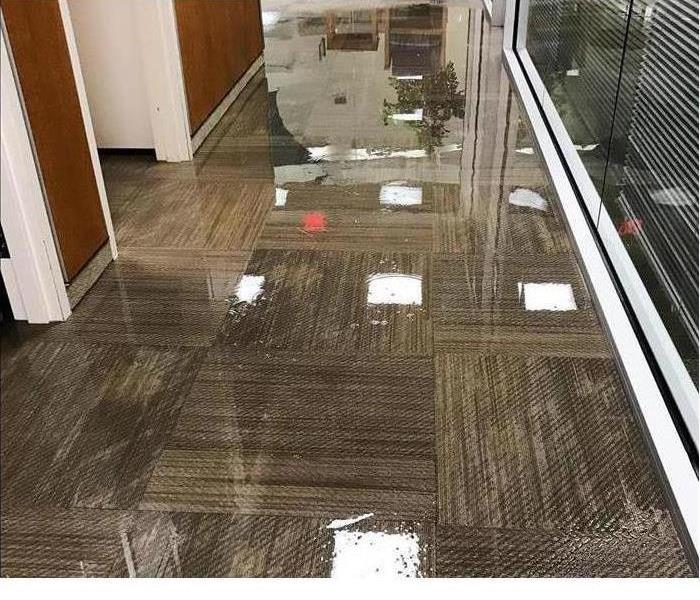 Standing water in commercial office space
Standing water in commercial office space
As we move into the colder, wetter months, we all have to consider the possible damages that our structures can sustain during this time of year. Summer’s storms are past, and now from leaky roofs and moldy siding to deep ruts in the driveway or potholes in the parking lot, the fall and winter months will bring their own set of concerns to both home and business owners. Weather won’t be as violent, but rains can last a lot longer, and then will come sleet, ice, and snow.
For the homeowner, some of the exterior concerns due to weather will be:
- Eroded landscaping
- Rutted driveways, especially those that are graded either up or downhill
- Moldy siding, window sills, door-jambs, window panes, and roofing
- Rotting wooden fencing and decking
- Leaking roof
- Puddles and pooling
For the business owner, some of the exterior trouble spots can be:
- Potholes and eroded surfaces in public parking areas
- Eroded walkways or damaged, buckling sidewalks and public walkways
- Leaking roofs
- Damaged materials and machinery that have not been stored properly
When it comes to the interior spaces, businesses have to keep an eye on employee bathrooms and kitchen/break areas to make sure that leaks are handled immediately and that spills are cleaned up right away. During bad weather, customers and vendors will track water and debris into your building, and both for safety and aesthetics, it will be a good idea to keep up with this type of accumulation to prevent water damage. Have an umbrella stand ready for everyone who comes through the door!
Homeowners also need to keep up with spills, leaks, and traffic, but it will obviously not be such a large job. In a home, water damage is more likely to come from a water heater or dishwasher that is malfunctioning, or a washer that has developed an issue.
One thing both types of structures have to be concerned about is mold, however - it is never a good thing to realize that a colony has taken hold in either your home or your business.
The team at SERVPRO of West Fort Worth is experienced in all types of clean up after water damage to both homes and businesses, and mold remediation is one of our specialties. Call us today at (817) 560-3086!
Dealing With Water Damage in your Attic
10/2/2020 (Permalink)
Considering the attic isn’t an area that is used often by homeowners, it’s easy to forget about it. This is the main reason water damage in the attic often goes unnoticed. If water damage isn’t addressed, it can cause more damage to the areas below the attic and potentially cause mold. The signs of water damage usually include water stains, mold, or musty odors in your home. It is important to make sure you take the proper steps to assess the damage as soon as you notice in order to assure your safety and health, and avoid expensive repairs.
In order to address the damage, you must first find the source of the problem. Begin by evaluating the damage. Where is the water coming from? Could it be a burst pipe or a hole in your roof? Make sure to check the roof for leaks on a regular basis. The water damage in your attic can also be caused by a lack of ventilation. Humidity can get trapped in the attic and cause a buildup of condensation, which causes water damage. Be sure to remain safe throughout this process and turn off all electrical items before touching anything.
The next step is to inspect for mold and fix any leaks. As previously mentioned, water damage can lead to a more serious issue, mold, and mildew. Mold can grow in as little as 24 hours, and it’s easy for it to go unnoticed. When inspecting for mold, it is important to take the proper precautions and be careful. Some mold is toxic to humans and if the mold is a serious issue rather than a small one, it’s best to contact a professional. It is also advised to contact a professional before attempting to fix any leaks unless you have to tools and skills to do so with ease.
SERVPRO of West Fort Worth is always ready to help and assist you with any water damage or mold you may have! If you’re in over your head with water damage, give us a call at (817) 560-3086.
Top Three Spots to Check for Water Damage in your North Texas Home
9/25/2020 (Permalink)
Catching water damage before it becomes evident can save you time and money, so knowing the top spots in your home to regularly monitor for damage is crucial for any homeowner. Instead of waiting until a water stain appears on your ceiling or water pools on the floor under your sink, make it a priority to inspect these three spots for water damage on a monthly basis.
- Check under the sink.
Sinks are regularly located in your kitchen, your bathrooms, and maybe even in other rooms in your house. Since water flows from the faucets and comes up through pipes underneath the sink, it’s not uncommon for leaky sinks to occur. Always inspect the cabinetry and piping underneath your sink for any leaks or moisture.
- Don’t forget to look behind the toilet.
Your toilet is another frequently-used appliance in your home that uses a lot of water with every flush. Monitoring the space behind and around your toilet for any water damage is always a good practice.
- Take a look at your roof.
It’s easy to forget to look at your roof for water damage, but if your gutters aren’t working properly or your roof isn’t in good shape, there’s a fair chance that water may be seeping through your roof into your attic, your garage, and your ceilings. It can be hard to know what to look for, but any obvious water stains are a bad sign. Be sure to check out the roof from the exterior and the interior sides (your ceilings).
Water damage can be costly and affect the structural integrity of your home, and so it’s important to keep an eye out for water damage before it wreaks havoc. If you’re looking to buy a new home, here are a few things to look for to ensure that you don’t prematurely buy a home that’s susceptible to water damage.
If you recognize the signs of water damage on one of your regular rounds inspecting the vulnerable areas of your home, contact SERVPRO of West Fort Worth at 817-560-3086. With state-of-the-art technology and training, our disaster restoration professionals are equipped for handling the job.
Local SERVPRO Highlights the Seriousness of a Sewage Spill
4/13/2020 (Permalink)
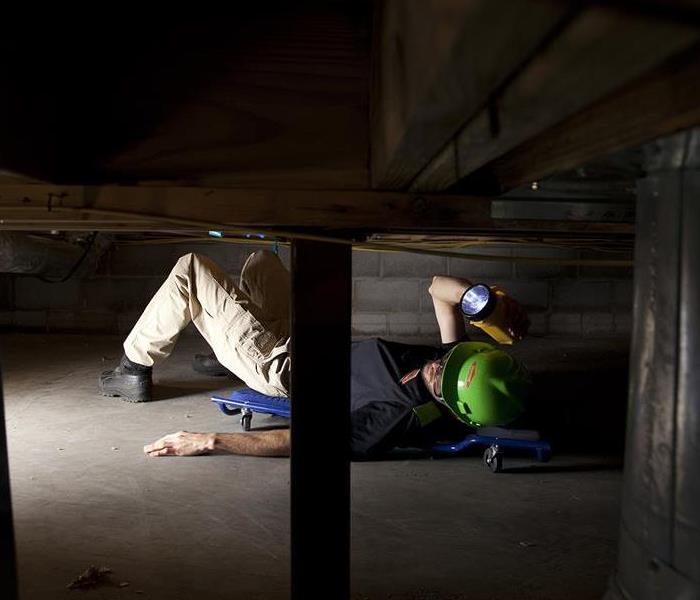 Here to Help
Here to Help
Summary: SERVPRO of West Fort Worth stresses the importance of hiring professional water damage restoration specialists to deal with a sewage spill.
Sewage spills and toilet overflows are hazardous and should be considered emergency situations. The bacteria in sewage can cause serious illness and should be cleaned up immediately. This scenario illustrates the seriousness of the situation and the many factors that come into play when dealing with a hazardous spill, especially one in a high-traffic facility.
Case Study: Mess in the Mission
The basement of the old church fellowship hall was converted into a ministry that provided clothing, household goods, food, and toys to families in the church and the community. The sharing project was clean, well-organized, and very inviting until the catastrophe struck. There had been some warning signs in the past, and minor sewage backups had occurred occasionally. The building originally was a home, but the septic system had met code requirements. Still, a blockage coupled with a high-traffic weekend resulted in the basement filling with an inch or more of liquid and sludge. The church members decided to clean it up as much as possible.
The decision to tackle the mess without expert help was a big mistake for the following reasons. The sewage covered most of the basement, and it was impossible to assess the full extent of the damage without walking in sewage, which was a couple of inches deep. Every time a toilet was flushed, more sewage backed up. Unavoidably, raw sewage was tracked throughout the multi-building facility. The entire facility, every building, eventually had to have the carpet cleaned, sanitized, and deodorized. As a safety precaution, every surface was wiped with sanitizer to avoid the potential spread of E. coli bacteria, especially in the nursery and toddler areas.
In the basement, anything that was on the floor had to be either cleaned or discarded. Clothes, shoes, toys, appliances, non-perishable food items, and lots of books were bagged up and hauled off. The sewage was shoveled up and hauled out in buckets. The furniture, clothing racks, and shelving in the basement had to be wiped down many times during the cleanup process. Since the septic tank could not be pumped out for a day or two, more sewage seeped into the basement. After three days, the leadership decided to call in a professional cleanup team. The septic backflow had been remedied. The trained, experienced, and well-equipped crew quarantined the building, set up safety barriers and warning signs, and got to work. The team suited up with protective clothing, rubber boots, rubber gloves, respirators, protective eyewear, and more. They brought in the necessary equipment to get the job done swiftly and safely. When they finished, it was impossible to tell that there had been a major black water incident in the basement.
In any situation involving water, people should take basic precautions such as staying calm, avoiding any electrical hazards, avoiding slip and fall hazards, and using a flashlight in dark or dimly lit areas. Here are 6 other safety tips to take away from the sewage spill scenario above.
- Identify and resolve any sewage backup issues before they arise, as it will save money in the long term. These are three types of water: clean water, gray water, and black water. Clean water comes from a broken water pipe, a leaking faucet, or a sprinkler system. Gray water comes from a washing machine, a dishwasher, or a toilet with only a minimal amount of urine but no fecal matter. Gray water can quickly become black water if not treated soon. Black water contains fecal matter and harmful bacteria. It can cause illness if it finds its way into the body through the eyes, mouth, or a cut.
- Establish guidelines and protocols for hazardous events such as a sewage or chemical spill.
- Maintain a well-stocked safety kit consisting of protective footwear or booties, protective eyewear, a respirator or masks, rubber gloves, heavy-duty garbage bags, disinfectant, disinfectant wipes, several LED flashlights, and a basic first aid kit.
- Should an overflow or spill occur, avoid tracking black water throughout the facility. Avoid walking on exterior sidewalks or walkways with contaminated footwear. The fecal matter could still be tracked by others into the building or into their homes.
- Once an area is contaminated, put up safety barriers and signage to redirect foot traffic.
- Immediately call in a trained, experienced, and well-equipped cleanup team to do the job quickly, thoroughly, and safely so the facility can be up and running as soon as possible.
Water contaminated with sewage backup should be considered an emergency and should be dealt with as quickly as possible. The skilled professionals at SERVPRO of West Fort Worth are available 24 hours a day, 365 days a year. They are water damage restoration specialists with specialized training, equipment, and protective gear to safely restore a home or business contaminated from a black water overflow from a toilet, septic tank, or sewer line. SERVPRO of West Fort Worth can be reached by phone at (817) 560-3086.
Water Categories - What Are They?
3/24/2020 (Permalink)
Water is water, right? You know you’re not supposed to drink salt water, and it’s probably not wise to drink from a random lake or river you find out on a hike unless you have one of those fancy filtering straws. You also know not to go near the toilet bowl water (and no matter how many times you tell your dog to stay away, she just doesn’t listen). But did you know that water has different categories and that when dealing with a water damage in your home we use these categories to see how we need to mitigate the situation at hand. It can help us dictate whether or not we need PPE or Personal Protective Equipment, and how much of it we need. It can also help us decide what type of cleaning supplies we need too!
So, what are the water categories?
Using IICRC (IICRC S500), or Institute of Inspection Cleaning and Restoration Certification, guidelines, we categorize water into three categories. So, what are they?
Category 1 or “Clear Water” – This water comes from a source that’s clean, for example your water supply line broke on your refrigerator, flooding your kitchen. That would be considered clean water. It can also come from a sink or a tub that’s overflower. However, when it comes to clean water losses, it’s important to act as quickly as possible because not only can it bring mold and mildew but the longer it sits and mixes with dirt or other particles on the floor the faster it can degrade from a category 1 to a category 2.
Category 2 or “Gray Water” – This is water that has bacteria present, think about a water source that you wouldn’t want to drink from. You wouldn’t want to drink your bathwater, or the soapy water that comes from the dishwasher or washing machine. Gray water has no solid waste in it, but it’s carrying microorganisms and the nutrients needed for those microorganisms. It can cause discomfort or some sickness in the event that some gets ingested. If you’ve had a toilet overflow that had urine in it, sump pump failure, this is all considered category 2 water. If left, just like category 1 water, it can devolve to category 3 water.
Category 3 or “Black Water” – This is the highest category that we can use when it comes to water. It is disgustingly unsanitary. It usually includes raw sewage or water sources that are considered to be contaminated. Sea water, ground water, and water rising from rivers and creeks are all considered to be category 3 water sources. Category 3 water is incredibly dangerous and can cause serious illness or even death if consumed by humans.
We take water losses seriously, and we know how fast water can go from a category 1 to a category 2 and so on and so forth. It’s why we are ready to go 24/7, 365 days a year. We have our crews on standby no matter the day whether it’s a regular Tuesday or a holiday. Our trucks are stocked and ready to roll out, and we can be to your location in as little as an hour! Give us a call today at 817.560.3086!
Battling the Unexpected
1/28/2020 (Permalink)
As homeowners, we try everything we can to make sure that we prevent water damages from happening to our home. We make sure all windows and doors are air and moisture tight, we perform routine maintenance on our washing machine vents, and hot water heaters, but sometimes water loss can be inevitable. It can come from where you don’t even expect it like a slab leak or a burst pipe from a wall. It can be overwhelming when you’re standing in ankle deep water and have no idea where to start. That’s why we are here for you! Whatever the reason we can be there to help in sometimes as little as an hour (depending on where you live in the metroplex) and can get that water mitigation happening as quick as possible so you don’t have to worry about any secondary damage that could occur. We have the knowhow and the teams to make sure that everything is good to go when we leave your home on the last day.
So, when the unexpected happens, give us a call today at 817.560.3086!
We've Got Water Damage Restoration Down To A Science
7/26/2019 (Permalink)
We’ve discussed protecting your home against water damage, but sometimes it’s just inevitable. Sometimes, the water can come through a hole in your roof, or your garage can flood because of a burst water heater. Whatever the reason, we can be there to help in sometimes as little as an hour. We work hard to make sure that your water loss is mitigated in a timely fashion so that you don’t have to worry about any secondary damage that may occur. We have the teams and the knowledge to get your job done right and done right every single time. We also have the equipment to handle a job of any size, whether it’s a small house or a huge commercial warehouse.
So, whenever the unexpected happens, give our team a call at 817.560.3086.
New Water Loss Detection Technology
7/25/2019 (Permalink)
With technology evolving every day, our houses are getting smarter. Products like Ring and Nest are common sights in homes, along with Amazon’s Alexa and even smart fridges from Samsung. With all these innovations to our more important and seen appliances, it makes sense that our smaller ones would have upgrades too.
Water is probably, singlehandedly, the most used product in our home. It can also cause the most damage outside of a fire to our homes if a leak or sudden failure of appliances should happen. We’ve written about some things to combat water damage in the past, like sensors placed around the spots in your home that could have the highest risk for a water loss such as a laundry room, heater, or bathroom. Either these sensors would let out an alarm – sort of like a smoke detector – alerting to a water loss or they would be attached to a shut off valve to help stop the flow of water and prevent making a bigger problem. These are great, and very useful but if you don’t have a sensor in a spot that could be vulnerable like under a sink or near a toilet it could still spell disastrous.
Now, there are some cool and innovative companies that are making water detection and conservation in your home is even easier than before. For example, there is a company that installs a water shut off valve that measures the pressure and temperature of the water flowing through the pipe and can tell you even if there’s the smallest leak somewhere. How? Through a Wi-Fi connection in the device that automatically connects to an app to tell you gallon usage, if the water pressure is off, and even if it’s going to get too cold and something is going to burst.
Homes are getting smarter every day, are you prepared?
Give us a call at 817.560.3086 for all your water loss needs!
Water Damage Stories: Fires Can Cause Water Damage?
6/28/2019 (Permalink)
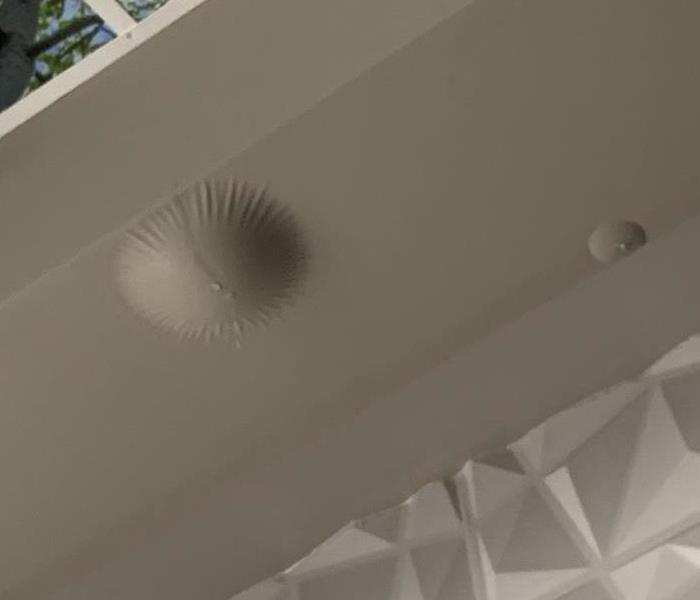 Take a look at this paint bubbling from all the water dripping down!
Take a look at this paint bubbling from all the water dripping down!
Often times, when dealing with fires we think of hot flame, burning and scorching everything. But did you know that water is the secondary cause of damage to a structure after a water loss? Take for example this nail salon that we restored at the beginning of this year. Upstairs was a hair salon, and an automated vacuum/trash can started a fire when something got caught in the feeder. Most of the most was contained to that salon room, however the sprinklers in the entire building came on.
This proceeded to flood the entire salon upstairs, leading to water leaking down through the roof and flooding the nail salon downstairs! We were able to get everything cleaned up so that both salons could open back up, ready for business!
If you’ve affected by water damage, give us a call today at 817.560.3086!
What's Your Water Damage Plan?
6/28/2019 (Permalink)
When water damage hits your home, do you have a plan in place just incase a toilet supply line breaks or storm water gets into your home? If you say shop-vac and a box fan, then you’re on the right track. Unfortunately, a shop-vac and a box fan aren’t quite the best way to handle a water loss and can lead to secondary damage like mold growth, warping of your flooring if you’ve got hard wood or laminate flooring, and a musty or moldy smell if you’ve got carpet. This can lead to sickness in your family, and that’s not good! Time is of the essence too, which is why SERVPRO of Lake Worth/Benbrook is ready to go, no matter the time of day, or even the day!
Give us a call today at 817.560.3086!
Water Damage Stories: Washer Supply Line
6/27/2019 (Permalink)
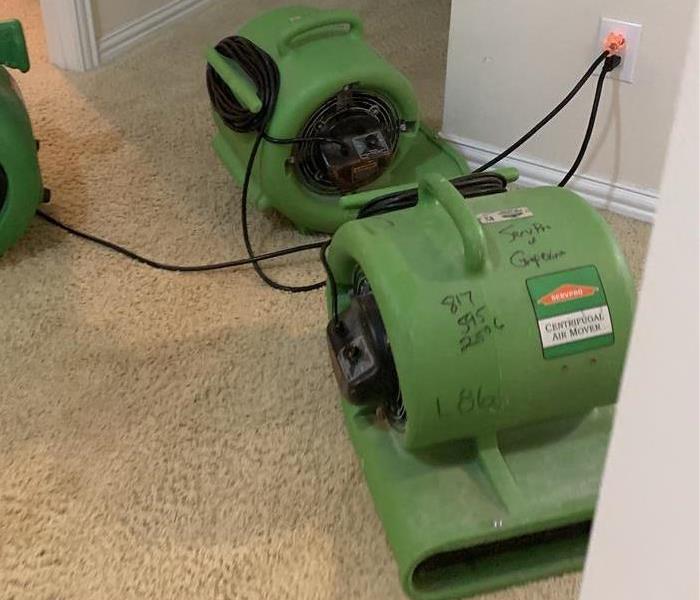 Air movers placed in the home.
Air movers placed in the home.
Did you know that your washing machine can hold anywhere up to 15 to 30 gallons of water? Now think about how much water it uses during a cycle. Depending on the settings you selected, it can range anywhere from 45 gallons and 90 gallons of water in one wash.
That’s what happened to this house. The homeowner was doing a load of laundry, when unbeknownst to her the supply line had cracked. When the homeowner returned, there was water everywhere. Just one load of laundry managed to flood the entire house. Every single room from the guest bedrooms, master bedroom, living room, kitchen, bathrooms, and halls were affected. That is a lot of water! Which is why make sure we are equipped to handle it. We loaded up our truck with 40+ air movers and 5+ dehumidifiers and headed out!
Once we get on site, we do a full 360 inspection, and then begin to extract the standing water from the flooring, and strategically place our dehumidifiers in spots that will increase drying time and ensure that nothing grows after we’re gone.
If you’ve found yourself with a broken water supply line give us a call today at 817.560.3086!
Water Damage Timeline
1/10/2019 (Permalink)
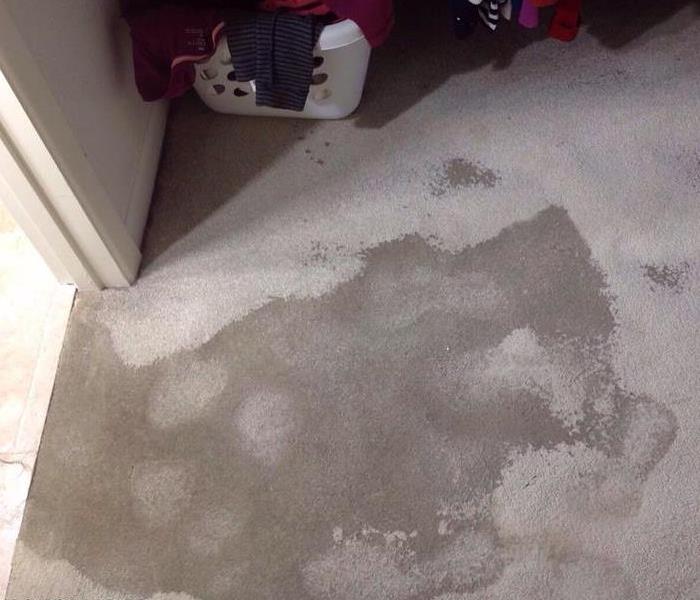 Water Damage: water seeping across floor and saturating carpet in Fort Worth home.
Water Damage: water seeping across floor and saturating carpet in Fort Worth home.
Here at SERVPRO® of Lake Worth/Benbrook, we know a fast reaction is a key part of preventing water damage, but what happens if you don’t take care of the water right away? Check out the timeline below to see what happens when water damage is left unchecked.
Within Minutes:
- Water spreads throughout the property and saturates all surfaces it comes into contact with. It is absorbed into carpets, walls, etc.
- Furniture finishes may bleed, or other dyes may begin to run and stain other surfaces.
- Photographs, books, and other paper goods begin to warp.
1-2 Hours:
- Drywall begins to warp and break down.
- Metal begins to tarnish & other furniture begins to warp and crack.
- Musty odor appears.
48 Hours – 1 Week:
- Mold may begin to grow.
- Doors, windows, and studs swell and warp.
- Metal begins to rust and corrode.
- Biohazard Contamination is possible.
More Than 1 Week:
- Restoration time and cost increase dramatically.
- Serious health risk posed to building’s inhabitants.
If your home or office sustains water damage, don't hesitate! Call us right away at 817-560-3086
Washing Machines & Water Damage
7/26/2018 (Permalink)
Did you know that water damage caused by washing machines is one of the most common ways your home can suffer from water damage? There are so many different ways it can happen too, like using the wrong kind of soap or detergent or overloading. However, the most common way for a washing machine to cause water damage is the water supply hose.
You should do routine inspections of your supply lines to make sure they are functioning properly. Keep an eye out for visible signs that the supply hose might fail. Worn tubing, cracks, blisters, or a loose connection. If the connection does feel loose, you should tighten it. Replace any worn hoses and be sure to replace them every five or so years even if there’s no visible sign of wear and tear. When choosing a hose, try and get one that’s braided steel. They’re stronger and can hold up to more over time.
If you go on vacation or are away from your home from any length of time, shut off the supply line valve to make sure nothing can accidentally happen while you’re away.
If you have had damage caused by your washing machine, don’t worry! Give SERVPRO of Lake Worth/Benbrook a call at 817.560.3086.
How To Spot Water Damage in Your Ceiling
7/26/2018 (Permalink)
It is easy to tell that your floor has water damage when you are standing in an inch of water in your living room, but how often do you check your walls or ceilings for signs of water damage? Pipes within walls and in between floors can leak or burst which can have major consequences if the problem isn’t addressed. Use the tips below to check your walls and ceilings for water damage.
One of the most obvious signs of water damage is discoloration. A yellow or brown spot on your walls or ceiling could mean that there has been a leak has occurred and need to be fixed. You may also see bubbling, cracking, or peeling paint as an indication that water could be causing some issues in your building.
While the water itself does not have an odor- it can cause something that does: mold. Mold can grow in any humid, warm place, so if a leak or spill is left unchecked, mold can definitely begin to grow on your walls and ceilings. Mold and mildew have a distinct musty odor, so if something doesn’t smell quite right, you should double check that you have no water damage or mold in your home or office.
Water damage may not always be visible right away, but sometimes you may be able to hear a leak or a gushing pipe when it first begins. Take some time to familiarize yourself with the way your pipes sound when they are working properly; know what it sounds like when water is running due to the washing machine, dishwasher, toilets, sprinkler system, or any other appliance that is connected to your plumbing system. If you hear something different one day, you will want to make sure that there are no issues with your pipes.
- Home is Difficult to Heat
If you keep cranking up the heat in your house, but it just doesn’t seem to warm up, you may have a water damage problem. Water and moisture can draw heat out of the walls and ceilings in order to evaporate. This means that instead of heating up your rooms, you are just heating up the water that has leaked behind your walls.
If you suspect water damage in your home or business, call SERVPRO of Lake Worth/Benbrook at 817.560.3086 to have our technicians fix the problem.
What's That Equipment?!
6/29/2018 (Permalink)
Water losses are scary – nothing is worse than waking up to ankle deep standing water in your kitchen or coming home from a long day at work to a sagging ceiling. It may even seem a little daunting – how are you ever going to get this much water out of your home? SERVPRO is the answer, as soon as you call us, we’ll send out a team of highly trained experts to your home special equipment to speed up drying time and get your life back to normal.
Your next question maybe: what king of equipment will our guys be bringing?
Extractors – Extractors do exactly that – they extract water. They can remove water from flooring such as carpet, tile, hardwood, and even some upholstery. Depending on the severity of the damage, we will either use a truck mounted or portable extractor both of which we ride on! These extractors can extract hundreds, if not thousands of gallons of water, giving us the ability to handle any sized job.
Air Movers – Once all the standing water has been removed, we will bring in our air movers. Air movers are basically a special fan that can move air along a wet surface, drying your home or commercial business way better than a traditional box fan. We will be placing our air movers in strategic locations around the affected area to make sure that every inch of the area is dry.
Dehumidifiers – Dehumidifiers are large machines that draw in moist air and replace it with warm, dry air. Essentially, they remove residual moisture to lower the humidity of the room. This helps accelerate the drying process and get you and your home back to its pre-damaged condition.
When you have water damage, trust SERVPRO of Lake Worth/Benbrook to have the right equipment and the right team to get the job done. Call us at 817.560.3086 – we’re ready to answer your call 24/7.
How To Tell If Your Flooring Has Suffered From Water Damage
6/29/2018 (Permalink)
Even the most expensive of floorings aren’t safe from water damage – it can destroy any type. If you’ve had a recent water loss in your home that was known, or you’re suspicious but not sure of a slow leak, then it’s important to know what signs to look for in your particular type of flooring. Fortunately, it’s fairly easy to tell.
Linoleum: If your flooring is discolored, that could very well mean it has been exposed to water.
Hardwood: Unlike other flooring, hardwood has four main signs that it has been exposed to water. First are dark spots. Some dark spots may be naturally occurring in the wood, if there are any that have cropped up recently, then it’s likely mold or mildew. Second is buckling, which means the planks have removed themselves from the flooring below them. Third is cupping, look for dips or raised edges. And lastly, look for bulging, if your flooring has started to bubble, looking almost like a crown then you’ve most likely have water damage.
Laminate: Look for warping, swelling, or discoloration.
Tile: Tile maybe a little harder than most to tell if you’ve had any water damage to it. A good trick is to tap on the suspected tiles with a coin, if you hear a hollow or empty sound it could mean the tiles have come loose. Discoloration is also another good tell.
Carpet: Smelly, discolored carpet? Probably from mold or mildew.
If your floor has any of the above signs, give us a call today, we’re here to help! 817.560.3086
Just What Kind Of Water Damage Is Covered By Insurance?
6/29/2018 (Permalink)
If you’ve suffered a recent water loss in your home, your first instinct is to call your insurance. That’s why we have home owner’s insurance, after all! But, what sort of damage is covered by your insurance? Each policy is different after all and what’s covered by someone’s policy may not be covered by another. It’s a good idea to talk to your provider to see what is and what isn’t covered by your policy. Below, we cover some of the more common causes of water loss in a home and if it may or may not be covered.
Appliances? Depends.
Some appliances maybe covered, though it depends on what kind of loss it is. If it’s sudden and accidental, like a hose disconnecting from your washing machine and flooding your utility room – it may be covered. If it’s a continuous leak that hasn’t been addressed, that is considered to be a failure to maintain your appliances and won’t be covered. Be aware that your insurance may also not cover your appliance if it gets damaged either, it could have to come out of your own pocket.
Roof? Depends.
Just like appliances, roofs are on a case by case basis most of the time, and actually can be really confusing. For example, if it’s a gradual leak it may not be covered because it could fall under the ‘failure to maintain’ category. However, if your roof has been hit by a tree because of a severe thunderstorm, then your home should be covered. We recommend calling your insurance agent about your policy for better understanding when it comes to roofs.
Pipes? Depends.
When it comes to pipes, it definitely depends on the situation. If it’s a burst pipe that’s unexpected then your insurance should cover the damage. If it’s a gradual leak, like in a hot water closet or under a sink, then that can be considered failure to maintain and will not be covered.
Seepage? No.
Seepage isn’t covered by your insurance because it’s considered to be a maintenance issue that could have been prevented.
Backed up drain or sewer line? No.
Unless you’ve added on extra coverage, you’re unfortunately not covered by insurance.
If you’ve suffered a water loss, call us today at 817.560.3086 we are available 24 hours a day, 7 days a week, 365 days a year.
Prevent Water Damage from Freezing Pipes
1/17/2018 (Permalink)
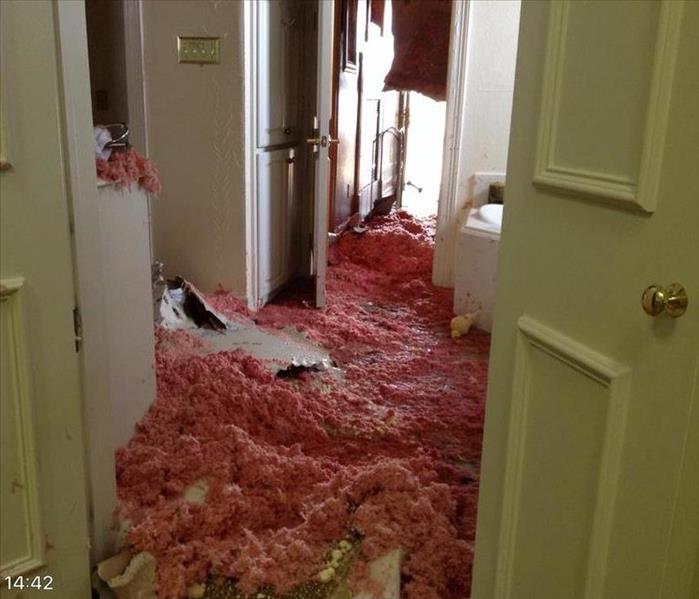 This damage caused by a frozen water pipe in the attic in Fort Worth
This damage caused by a frozen water pipe in the attic in Fort Worth
As winter bears down on Fort Worth, we're going to address some tips on how to deal with the risk of frozen water pipes. The water damage experts here at SERVPRO of Lake Worth / Benbrook have many years of experience in dealing with pipes which freeze, whether those pipes are in a wall, in the attic, in the garage or in your crawl space. Every year, usually right after our first hard freeze, our customers in Fort Worth, Azle, Lake Worth, Benbrook and surrounding areas confront pipes which have frozen and burst.
As the old saying goes, an ounce of prevention is worth a pound of cure; this applies to frozen pipes about as well as any situation where that saying might be used. Here are some of our best ideas for preventing this type of damage:
Before winter gets here in force:
- Find the shut off valves for exterior water sources like hose hookups and outside faucets. Close these valves and open the faucets to drain any residual water. Be sure to leave the faucets open all winter.
- Review insulation options for any plumbing in crawlspaces, attics or which is generally exposed to extreme cold
During Winter:
- Keep your home heated above 50 degrees, even if you won't be home for extended periods.
- For faucets inside the home which may have plumbing in exterior walls of the home, leave the faucet on enough to allow a slight drip out of the faucet.
- Leave cabinet doors open if there is plumbing in the cabinet - this will permit the warm air to circulate more evenly across the pipes.
- Keep your garage door closed as much as possible
At this point, you may be asking yourself why you would go through all of that - what's the big deal if my pipes freeze? Well, frozen water isn't really the big deal - it's the stress the frozen water puts on the plumbing. As we all learn early in life, water expands when it freezes. This expansion is what causes the pipes to fail, whether it's a tiny pinhole or a 3 inch long split of a pipe. Then, once the frozen water melts, the water rushes into your home via the breached pipe. Under normal household pressures, a half inch diameter pipe might allow as much as 50 gallons of water to pour into your home every minute.
If all of the preventative steps weren't enough, and your pipes have frozen and are now leaking into the home, turn off the water to the home immediately at the main shut off. Then call the water damage experts at SERVPRO of Lake Worth / Benbrook to assist you with the clean up process.






 24/7 Emergency Service
24/7 Emergency Service


